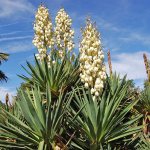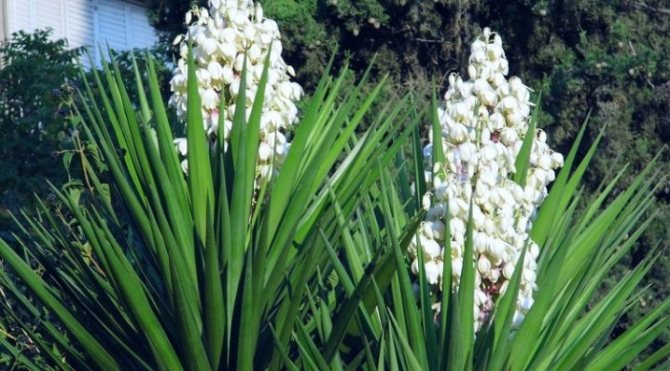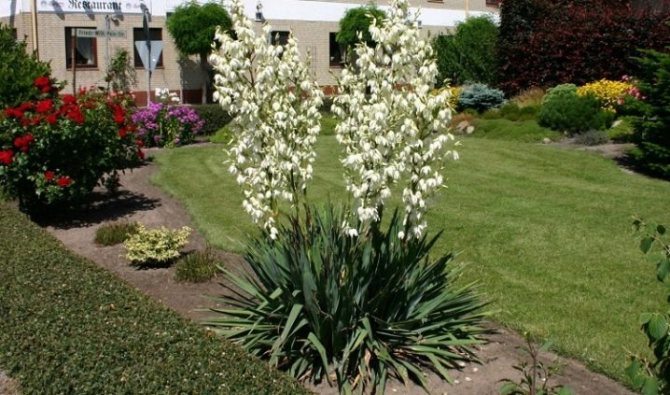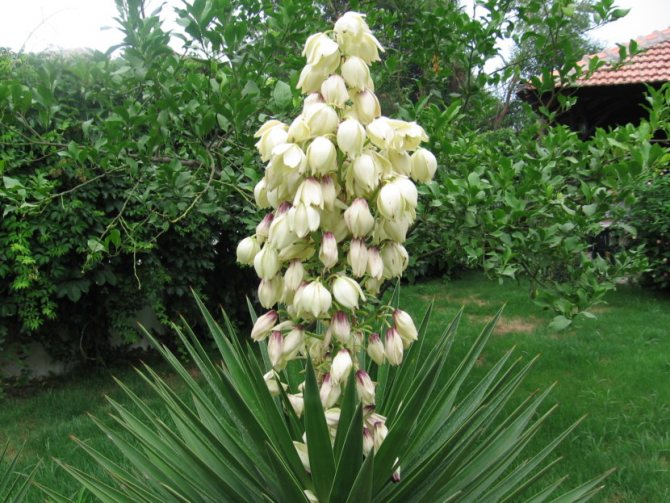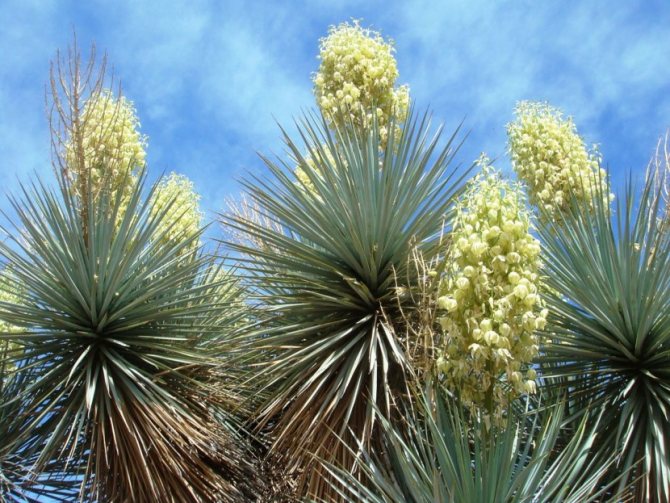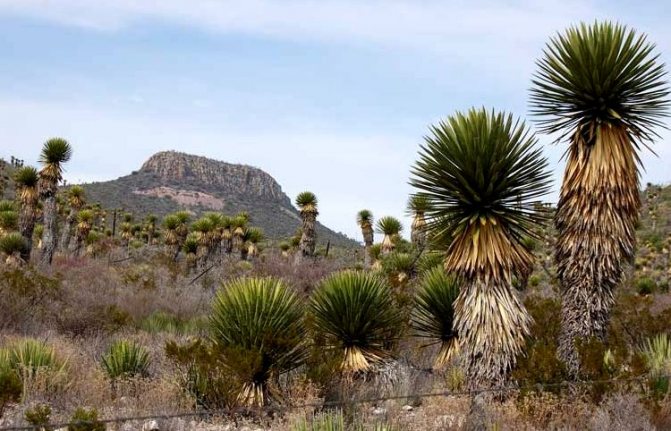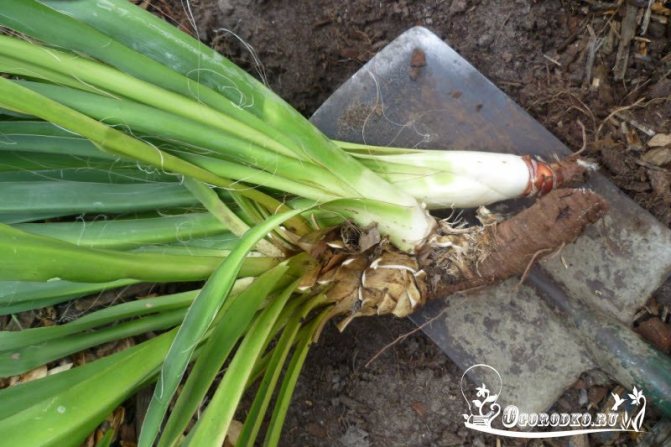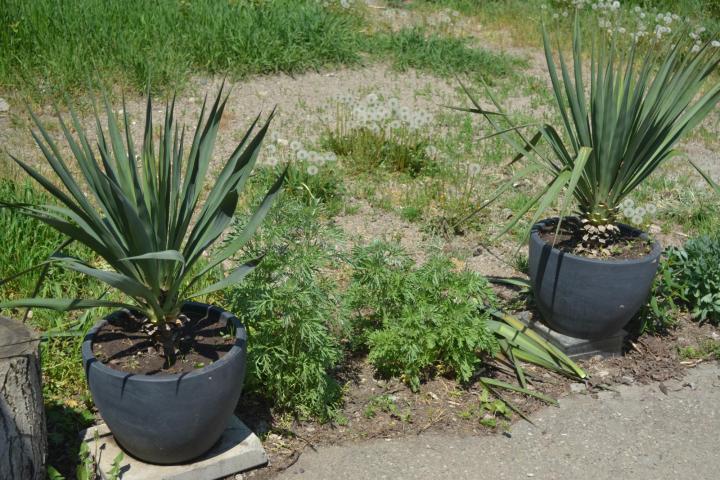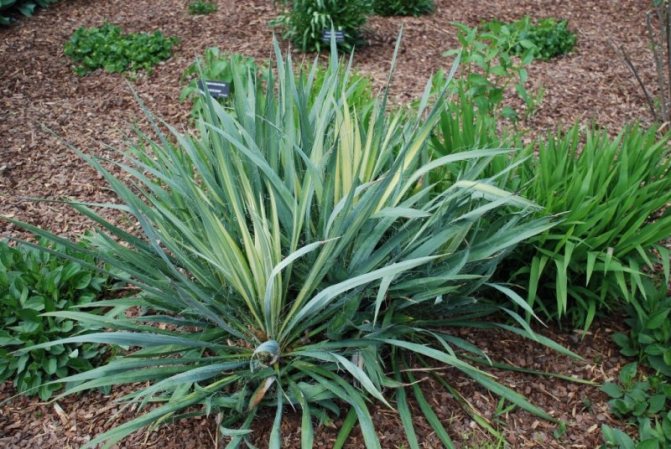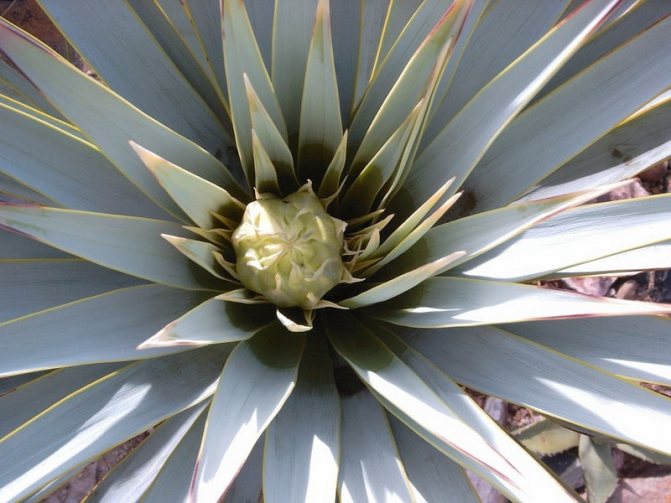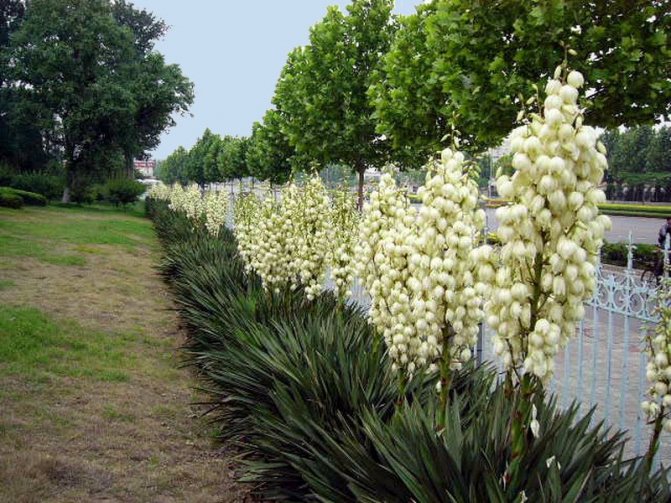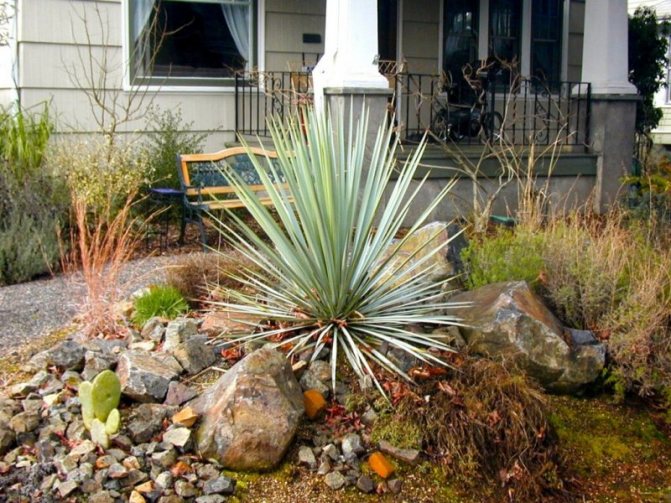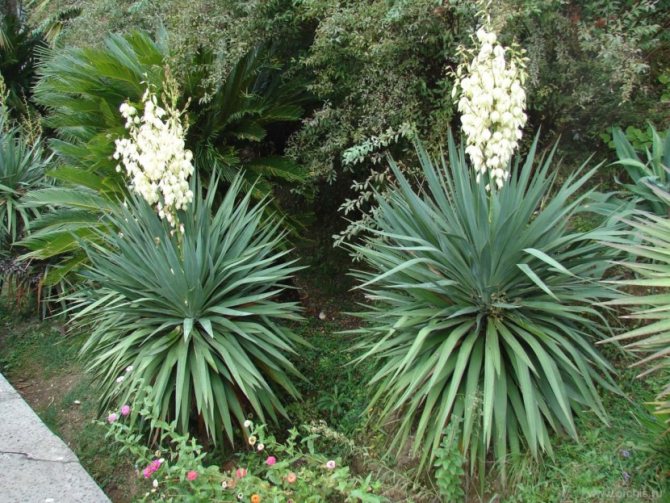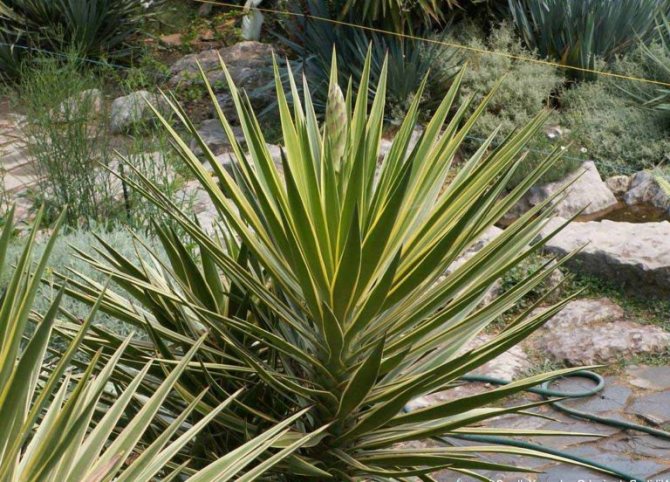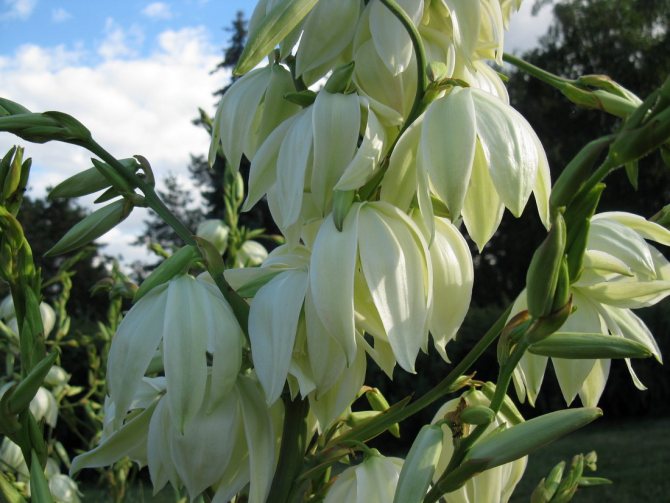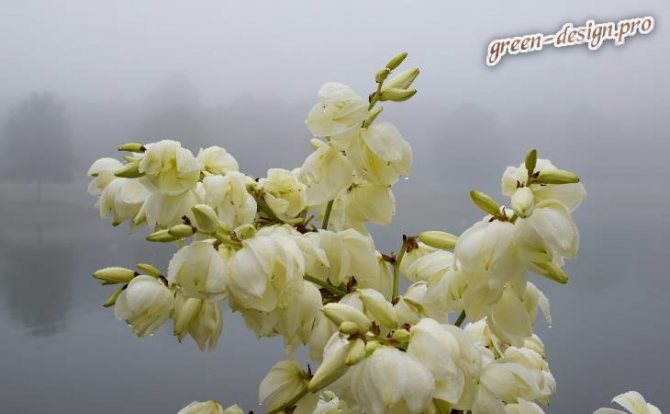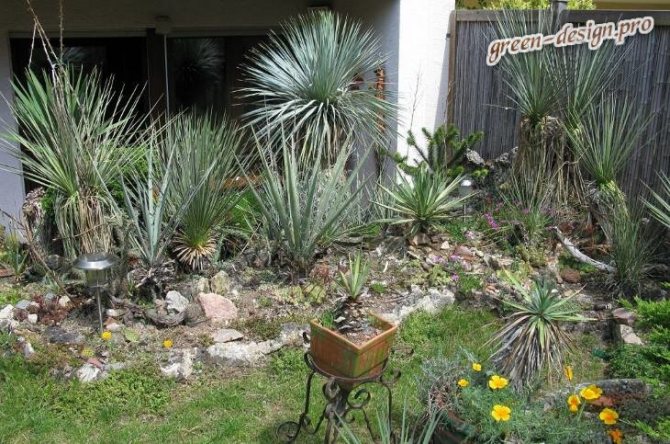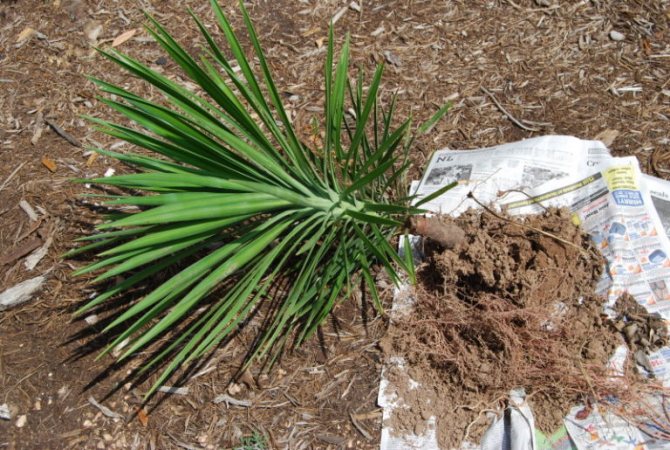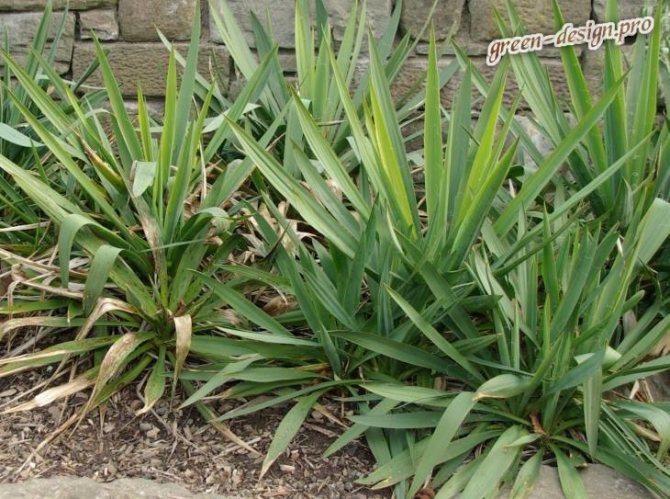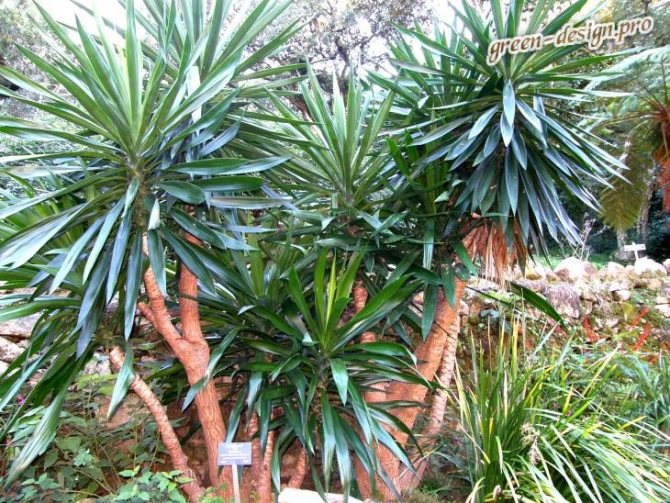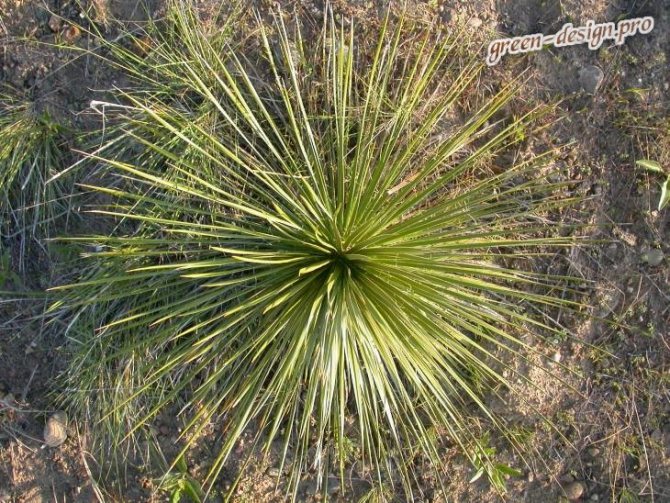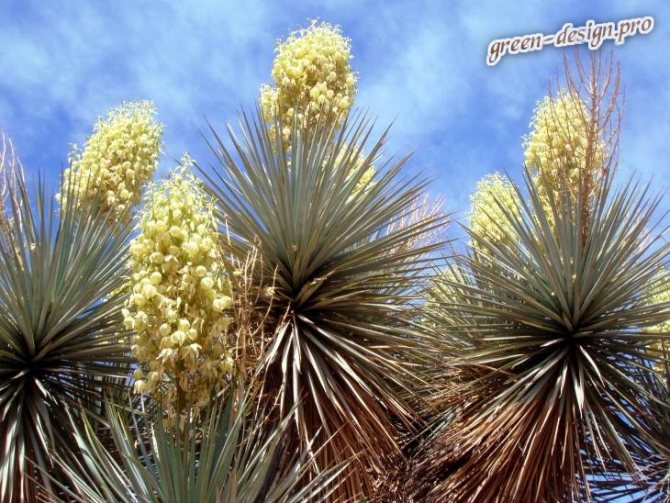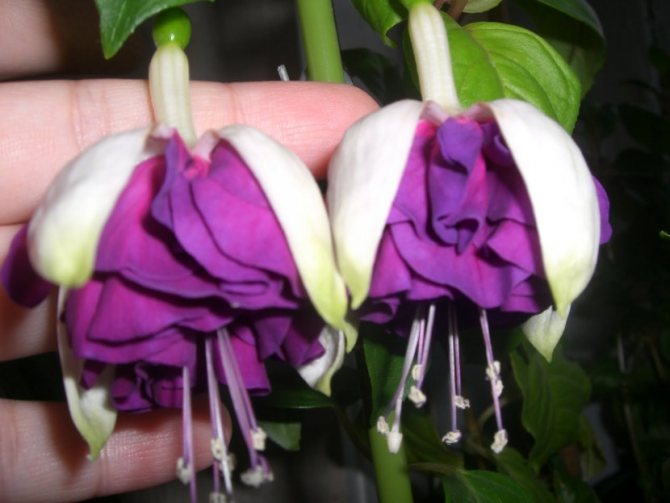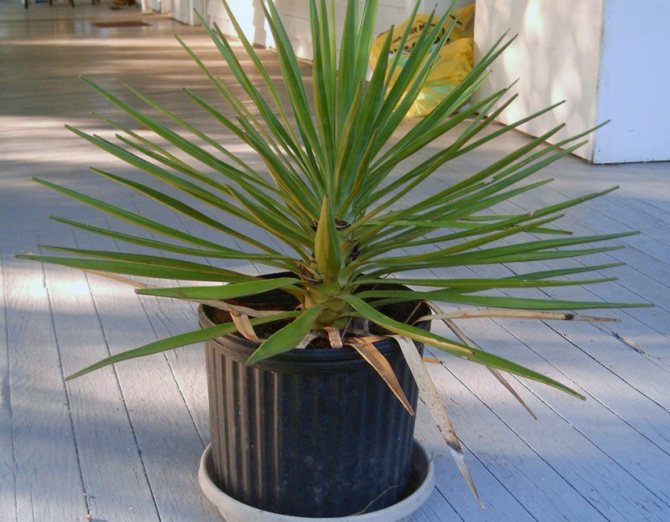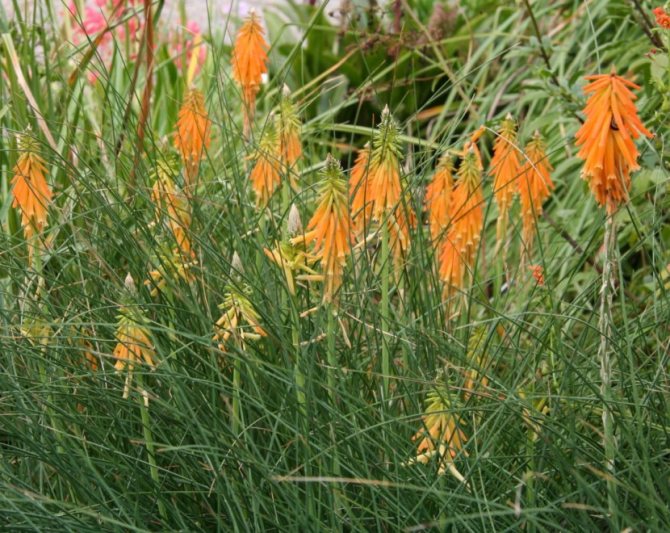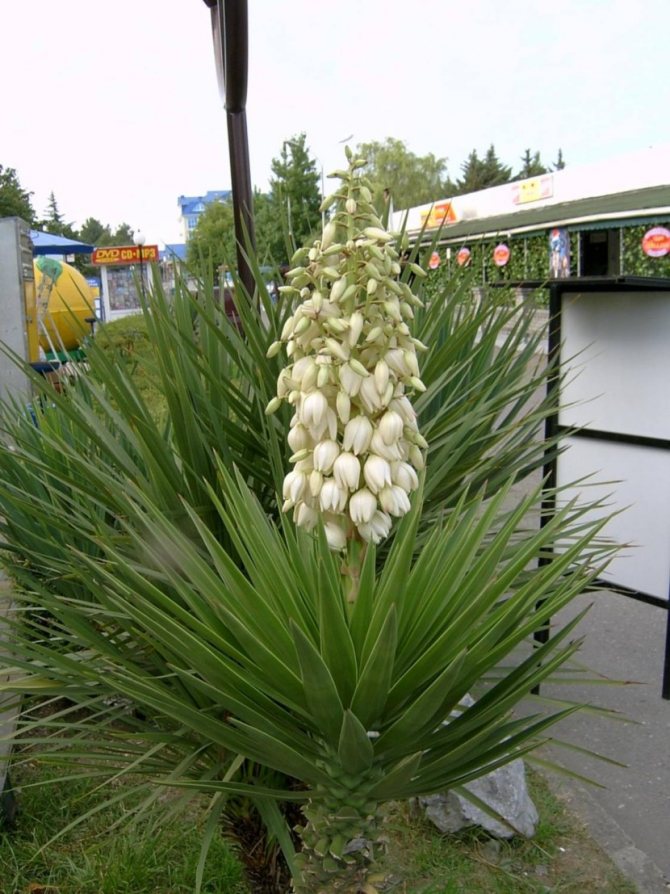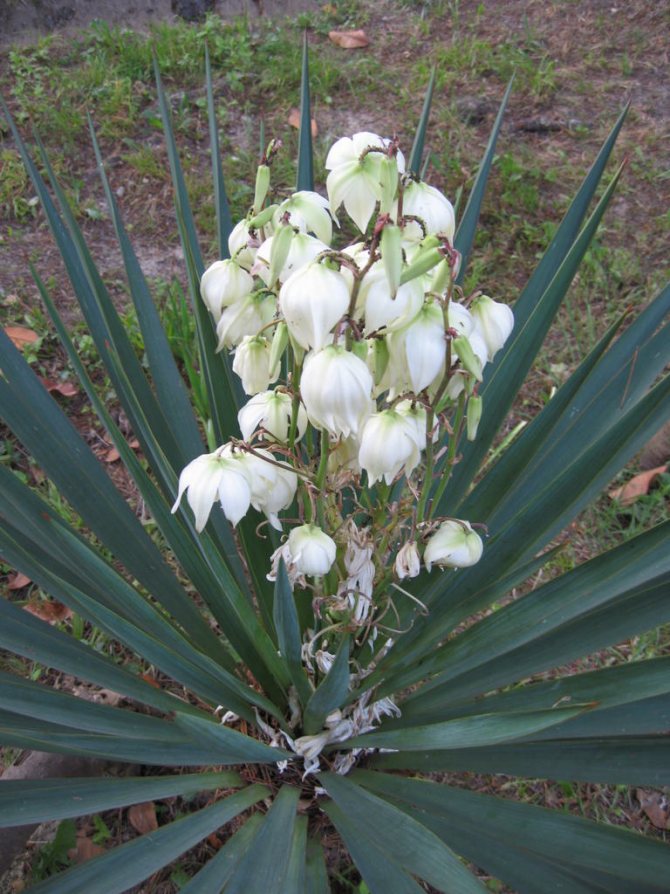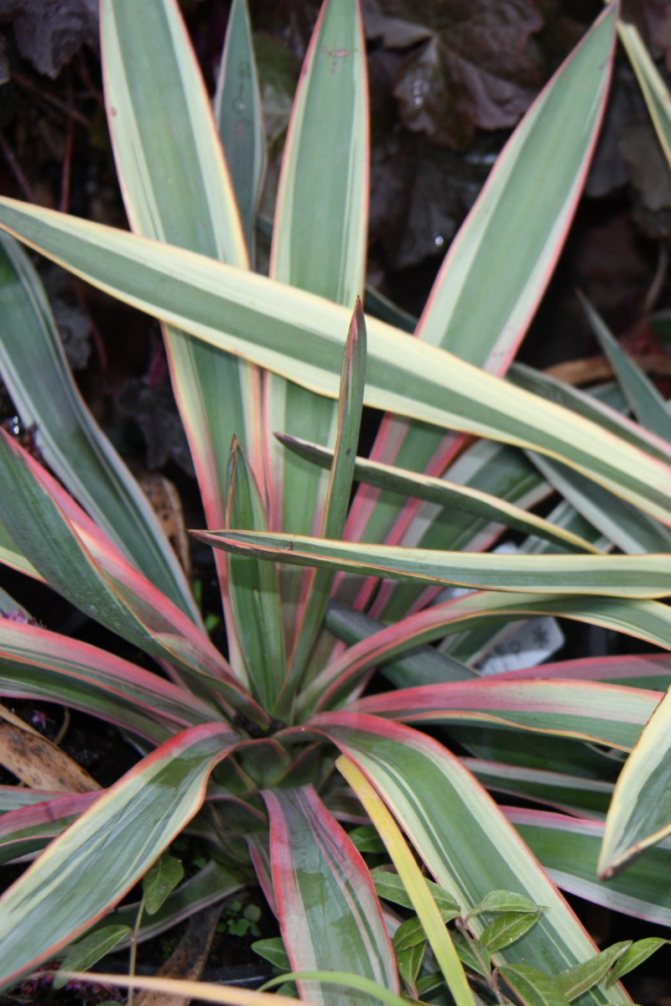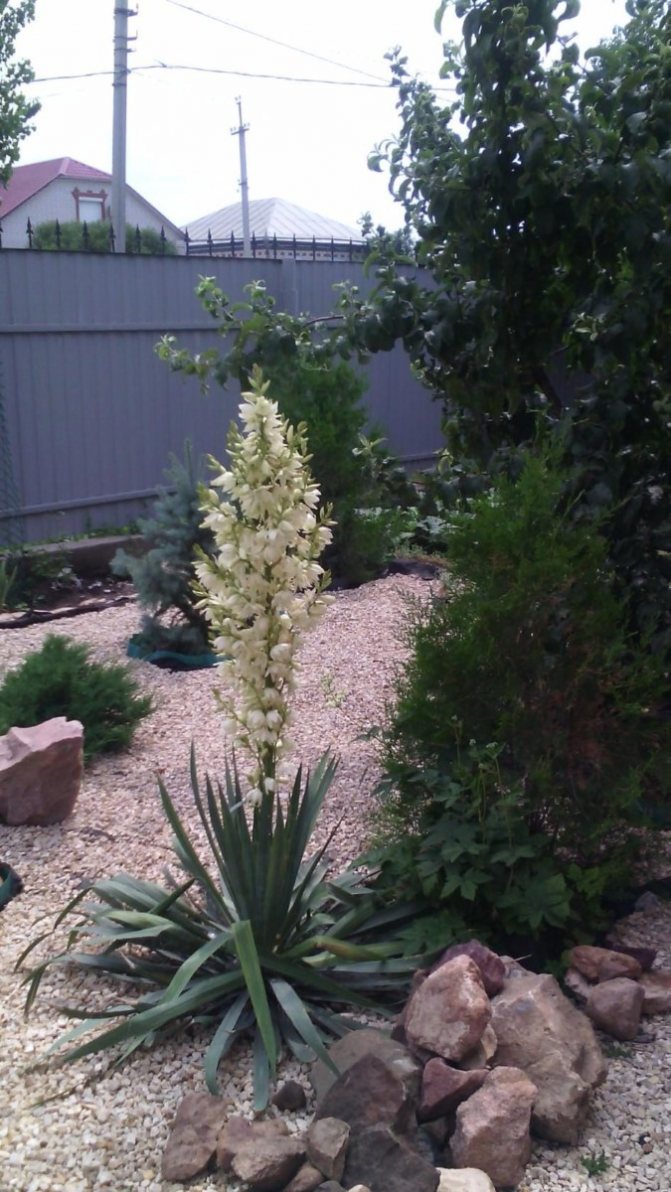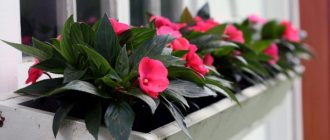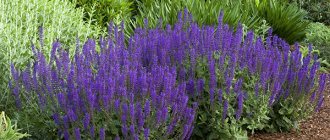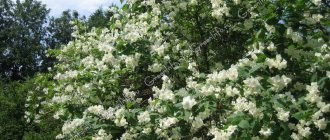The plant, which naturally occurs in the subtropical and tropical zone of the American continent, with all its exotic appearance, turned out to be not so capricious. The yucca semi-deserts, accustomed to the arid climate with sharp temperature drops, were able to acclimatize even in the middle zone. True, transferring only slight frosts in the open field, the plants need good shelter for the winter. And in the southern regions of the country, they are often grown without any restrictions. Two types are suitable for planting and caring for yucca outdoors. This is a filamentous yucca, so named for the long fibers hanging from the edges of the tough foliage, and the yucca is glorious. The first type prevails in Russian plantings, since it is more winter hardiness.
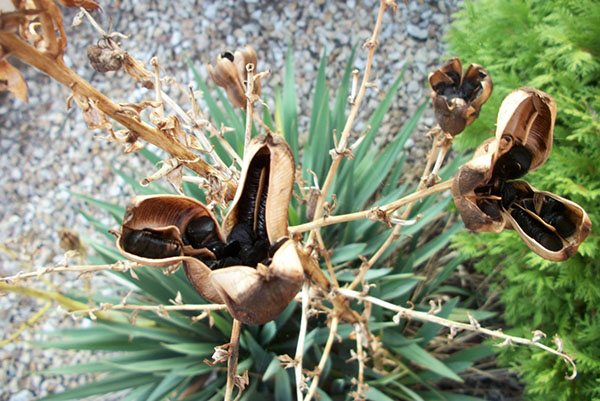
The large evergreen plant is easily recognizable by its pointed, lanceolate leaves forming a dense rosette. With a width of 3–6 cm, the length of one leaf plate can reach 50–70 cm. As it grows, the lower rows of leaves fade, and when they dry up, they sag, forming a kind of skirt around the trunk. If the garden yucca is in good conditions, does not freeze and does not suffer from waterlogging, it blooms every year. Powerful peduncles up to 1.5–2 meters cannot be overlooked. And when from 80 to 150 white, yellowish or pink bells with a diameter of up to 6 cm open on them, the type of yucca boggles the imagination of any gardener.
How to plant a yucca?
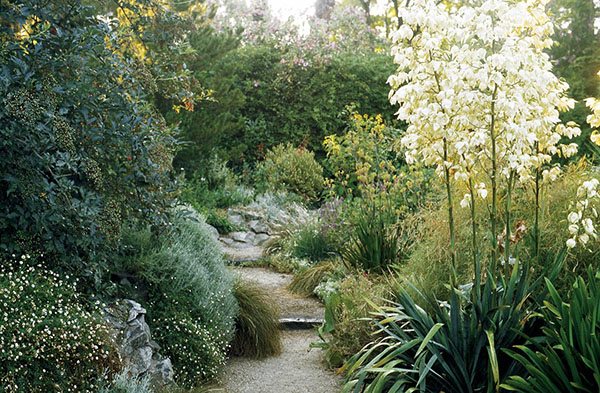

Yucca is unpretentious and hardy. She is not afraid of drought, heat and wind, but the main enemy of the plant is waterlogging and heavy soils, where there is a risk of moisture stagnation.
To simplify the care of the garden yucca, in the photo, planting is carried out in a well-ventilated, sunny place. When choosing a site for an exotic beauty, you should avoid the lowlands and corners of the garden with dense shade. The long stay of partial shade leaves a mark on the external appearance of the culture. The leaves lose their former density, the trunk is pulled out. As a result, the plant looks rather sloppy even when given full care.
Yucca has no special requirements for the composition of the soil. The main thing is that the roots receive enough air, and the water does not linger in the soil. Therefore, before planting yucca, sand is added to the substrate for filling the pit in areas with dense black soil or clay. A drainage layer is needed at the bottom, and humus is added to the substrate to provide nutrition, especially on poor soils.
Despite the unpretentiousness of the culture, it will not work at all without leaving after planting yucca in the open field.
Types and varieties
All types can be roughly classified into indoor and outdoor plantings. The dominance for planting in open ground, undoubtedly, is attributed to the type - garden yucca.
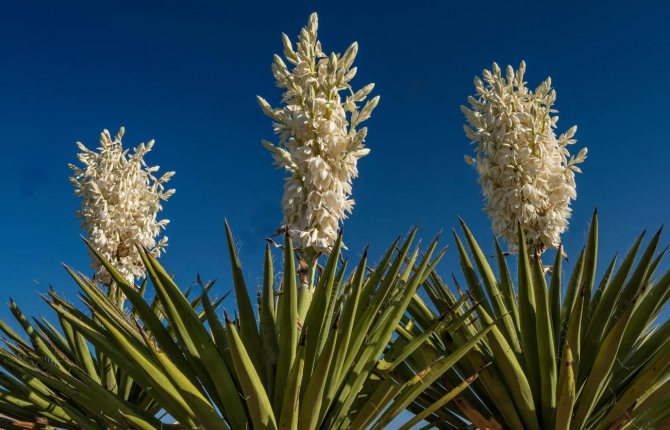

- Yucca filamentous (Yucca filamentosa) is another famous plant with almost no trunk. Yu filamentous has sharp, strong leaves with a dark gray coating, along the edge of which graceful strong threads of snow-white colors are located.Large yellow-cream flowers, matched in a panicle brush.
- Yucca is glorious (Yucca gloriosa) - a plant that is very common in the United States, this species has leaves of a bluish tone with jagged edges of the deciduous blade and a pointed thorn at the top of the leaf. The trunk is very strong, tree-like. Yucca glorious blooms with picturesque pleiochasia, which consists of a large number of bell-shaped flowers of pink-purple tone.
- Yucca Trekula (Yucca treculeana) - this modification of yucca is mainly grown at home. The tree-like trunk is covered with nests of strong leaves painted in emerald-sky colors. The leaves are elastic, in adulthood, the leaves have every chance of reaching over 1 m. Yucca treculeana blooms with unusual cream-colored bell-shaped flowers.
In the bosom of nature, there are many more common types: aloe-leaved, radiant, gray, beak-shaped, Schotta, short-leaved, open-leaved, elephant, southern, Whippla. All types are characterized by massive strong trunks (in some types - reduced), hard leaves and paniculate pleiochasia with bell-shaped flowers.
How to care for a garden yucca flower?
After planting, the plants need very moderate watering, sanitization, which consists in removing dead foliage and wilted flower stalks, rare dressing and pruning.
Watering is carried out at the root, trying not to flood the core of the outlet, since the water remaining here for a long time is the main reason for crown decay and the need for cardinal pruning of the yucca.
As a rule, garden yucca is rarely affected by pests or diseases and, with a good shelter, winters well even in the Moscow region. So that the roots of the plant breathe more actively, and the moisture remaining under the dense rosette does not cause rotting of the lower leaves and roots, the space under the garden yucca is regularly loosened, simultaneously removing weeds and fallen leaf plates.
If the place for the culture was initially chosen incorrectly, the plant up to three years of age can be transferred to another, more suitable site.
How to transplant a yucca? Although the plant belongs to evergreen crops, for the winter its biological processes freeze, and the new growing season begins only in spring. This time is used for transplanting garden yucca, the care of which in such a situation is sometimes complicated by painful addiction to a new place of residence. When transferring a bush, it is important to try to preserve the entire root system of the plant, preventing it from drying out. To do this, when transplanting, use any means to moderately moisturize the roots of dug plants.
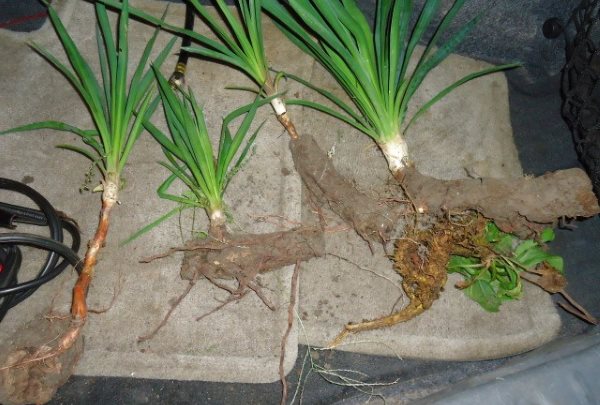

The transplanted specimens are not fed for about a month, and the rest of the yucca in the garden must be fertilized in the spring and then in the summer, before flowering and after the inflorescences wither. At 3-4 years old, yucca bloom for the first time, and the racemose inflorescence retains its decorative effect for about a month. Feeding with complex formulations with a predominance of nitrogen will help to maintain the strength of the plant. Fertilization is stopped a month before the onset of autumn coolness. This will allow the yucca to prepare for winter and survive the cold weather successfully.
When to plant a yucca - in spring or autumn?
Yucca propagation in the garden: in spring or autumn? Read today's article so you don't miss out on yucca planting season. Fast and easy yucca breeding.
The main thing is to start - beginners do not always understand when and how to approach a yucca, so they delay planting the plant until it begins to die from a lack of fertilizer. The plant is resistant, it tolerates heat well, but it did not make friends with frosts, which helped gardeners decide when to plant yucca - in spring or autumn.
- When to plant yucca in spring or autumn: in the fall for warm regions, in the spring for the Leningrad and Central regions, Moscow, the Urals, Siberia.
Why propagate in the fall:
- Manages to take root before frost;
- Winter is not frosty and the soil will not freeze;
Autumn yucca planting can be used as a starting point for plant life. In the southern regions, yucca gradually adapts and has time to harden before the onset of cold weather, but this tactic is not applicable for areas with unstable weather conditions, short summers or early frosts.
Pros of spring yucca planting:
- Saplings have time to get stronger;
- There is enough time for hardening;
- Will get stronger quickly;
- The roots will not freeze;
There are more arguments in favor of spring yucca planting, so choose either this period or the breeding time that works best for your gardens.
Shelter for a garden yucca for the winter
Plants tolerate sudden snow falling out in autumn or spring without loss, the main thing is that it melts within a couple of days. But stable cold weather and snowless winters are deadly for garden yucca.
First of all, the growth point in the core of the outlet suffers from frost, and then the vegetative root system. A frame shelter, representing a spacious box as high as an adult plant, helps to protect the culture.
Before covering the foliage, the yucca are collected up and tightly wrapped with a strong cord. Then the plant is covered with a box on top and abundantly sprinkled with spruce branches or fallen leaves. The entire structure is wrapped with a covering material and secured with tape. Checking the stability of the structure. In this form, the plant will spend the winter without problems, it will be especially comfortable under a layer of snow.
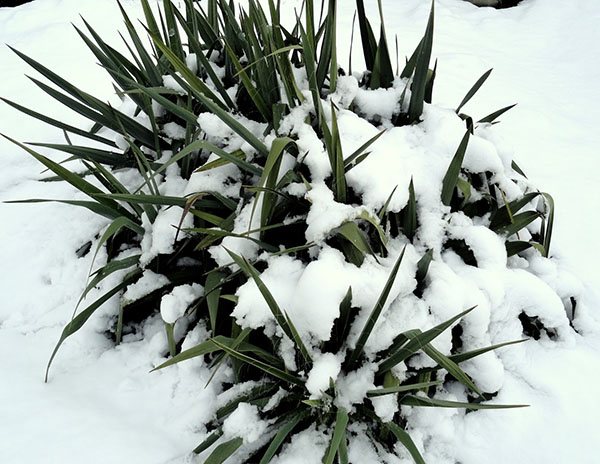

You can remove the frame and remove the foliage with the arrival of stable positive temperatures. If you are late with the "release of the captive" there is a danger of mold and decay due to the activation of respiration and the beginning of the growing season of the plant inside the enclosed space.
When to open yucca in spring
The winter shelter is removed from the plant with the onset of warm weather. In the middle climatic zone, this is the second or last decade of March. If the air temperature warms up during the day and the nights are cool enough, it is better to open the plant only during daylight hours. When the daily air temperature stabilizes and the probability of frost decreases, the plant can be opened completely. Often, most gardeners do this in early April.
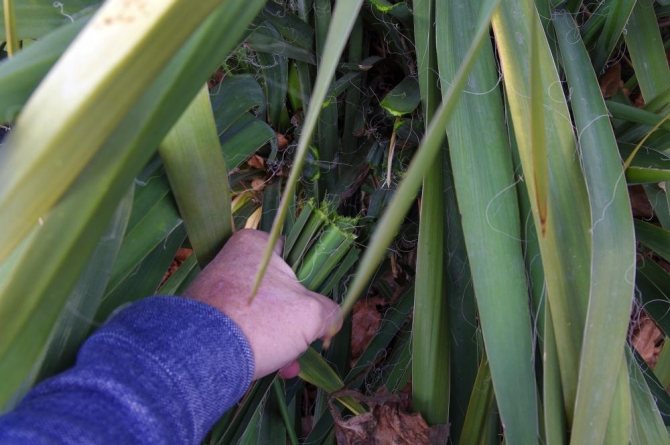

How to propagate yucca?
Although with proper care after planting, the garden yucca, as in the photo, blooms, it will not work to wait for its seeds in the middle lane. How to propagate garden yucca? There are several ways to get young independent plants. Most often, daughter rosettes are used, which are formed at the base of an adult bush. It is better to take layers with an already developed own root system. This will speed up acclimatization and allow plants to quickly develop in a new location.
Daughter outlets are easily detached when transplanting garden yucca, while caring for them is no different from what other plants receive. At the same time, do not forget that the cut sites are most susceptible to all kinds of infections and pest attacks. Therefore, they are slightly dried and sprinkled with crushed coal or cinnamon powder.
During a spring transplant, several cuttings from 5 to 10 cm long can be cut from a healthy strong root. They are treated with coal and planted in a greenhouse, lightly sprinkled with a wet sand-peat mixture. In this case, the formation of sprouts occurs due to dormant buds.
Another way that allows not only to rejuvenate a plant that has grown and lost its compactness, but also to propagate an exotic guest, is pruning. How to make yucca more fluffy and get quality planting material?
Garden palm tree care and planting in the garden
Despite its unpretentiousness and endurance, yucca feels especially comfortable in elevated places with good illumination.Representatives that grow in darkened places are characterized by thinned, loose rosettes and pale leaf blades.
When and how to plant a flower of happiness
Spring is the most favorable time for planting plants, but temperature indicators should not fall below + 10C. The dense structure of the leaves can lead to numerous cuts and injuries to the hands, therefore gloves should be used when replanting the plant. The plant transplant itself is carried out in the spring, but the preparatory work needs to be done in the fall: dig up the ground and form a hole for the spring plant transplant.
What kind of soil is needed
Yucca can grow on almost any soil, but it must be remembered that air should be supplied to the roots in large quantities, and the soil should not be excessively moist, preferably without a close location of groundwater in order to avoid decay.
But most of all, garden yucca prefers calcareous, sandy, clay-stony soils and black soil.
If the soil in which the plant grows is poor in nutrients, it is saturated with humus.
Before replanting, the hole is filled with coarse gravel or sand with the addition of two handfuls of ash. After planting, the soil should be pressed (compacted) and watered.
- The size of the planting pit depends on the size of the plant itself.
- Adult plants will need a depression up to 50 cm deep and up to 1 m in girth.
- Young specimens will require less space, but consideration must be given to the area required for the growth of the young.
For easier adaptation purchased plant to outdoor conditions, it is advised to harden the plant for 11-14 days, regularly taking the plant out into the street, gradually increasing the time of its stay in the open air. Only after such preparation, the bush can be safely transplanted to the personal plot.
Watering and feeding
In the processes of watering and feeding, the main thing is to know when to stop. Excessive watering threatens root decay, and a lack of moisture will certainly affect the state of the leaves. They will begin to curl into tubes. Watering correctly will help straighten the leaf blades. Often there is no need to water the plant, and only when the topsoil has dried out. Spraying the leaves, which is carried out in the morning or evening hours, when there is no longer the scorching sun rays, is useful.
When does yucca bloom? This exotic plant blooms when it has been growing for 3-4 years. To start this process, at the beginning of summer, the trunk of the plant is surrounded by superphosphate, which, dissolving in water, penetrates to the roots of the plant, starting the process of forming numerous buds.
How to prune a yucca?
It is best to prune the plant in spring, when it has just been freed from winter shelter. Since the yucca has only one growth point, by cutting off the stem, the gardener completely stops its vertical development. And yet the life of the flower will not freeze, the buds sleeping on the stem will wake up and give several new outlets.
Pruning is a great way to rejuvenate the flower, get strong garden yucca seedlings, and save rot or frost-affected specimens.
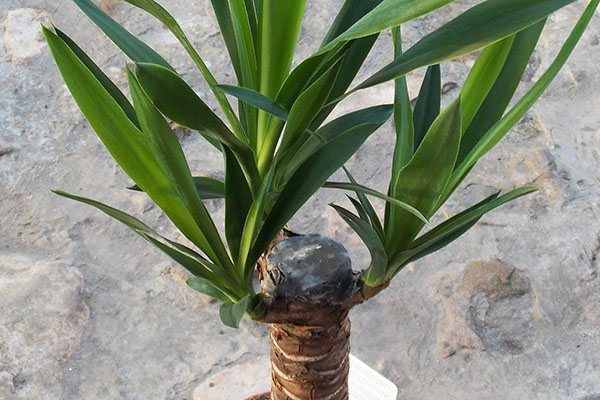

Before cutting the yucca, water the plant a couple of days before the operation. The cut is made with a very sharp, clean knife so that:
- in its place there were no splits of the stem, damage or detachment of the bark;
- it fell 8 - 10 cm below the foliage growth line.
In landscape design
If yucca grows in the garden, then the surrounding landscape immediately takes on a Mediterranean shade. It will look great even in the driest areas and territories.
It is the appearance that resembles a palm tree that gives the garden plot a special southern atmosphere, especially if there are other southern representatives in the neighborhood, for example, garden hibiscus.Even if yucca grows as a single plant, it is able to conquer with its appearance during the flowering period and become at that moment the brightest and most colorful spot on the garden plot.
Some types are used in the design of verandas, stairways and other architectural structures. Such options do not imply winter shelters or special premises for the winter season.
Blooming yucca in the garden video review:
Description
There are more than 20 species of this plant. Another name for it is false palm. So she was nicknamed for its appearance, indeed, the similarity with a palm tree is very great. And the Indians called it "The Tree of Life".
This is a tree-like perennial plant that can perfectly winter in the open air of the Caucasus, Crimea, Ukraine and all southern regions. In the northern regions it is grown as a house pot plant.
Yucca garden perfectly took root in the gardens of the southern regions of the country. She feels comfortable in gardens and parks. It grows slowly. It begins to bloom at the age of three years.
An evergreen perennial, it can be a tree or a shrub, depending on the species. The trunk is of various sizes, it can be several centimeters high, or it can grow several meters.
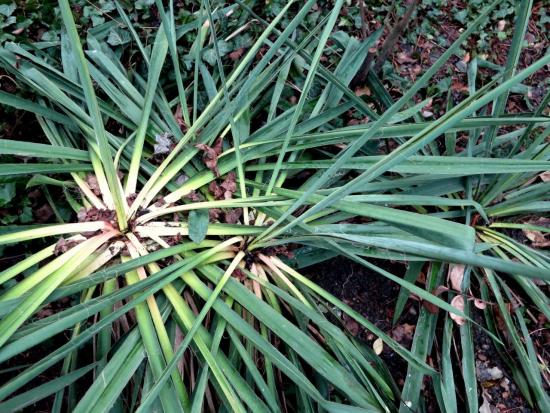

The trunk of the tree grows straight or has several branches, the maximum height is up to 12 m. The arrangement of the leaves is rosette, they are elongated along the entire length, often have thorns. Leaves are dense, tough, located on a shortened stem.
The color of the leaves is dark green with a dusting of a bluish tint.
Blooms in the summer, it is an unusually beautiful sight. Flowering lasts for 3 weeks. During flowering, the false palm transforms and becomes even more attractive and exotic.
The flower is a huge candle made up of many flowers that look like a bell. Has a pleasant aroma, similar to the smell of expensive soap.
The flowers themselves are edible and have a pleasant taste similar to green beans or artichoke. They are often added to salads or omelets.
There are bred frost-resistant varieties of false palm. Frost-resistant yucca is a perennial plant that can winter outdoors for several years in cold climates. But, unfortunately, after several years of growing it in a garden or park, the trunk begins to grow over with bark, which is vulnerable to cold weather factors.
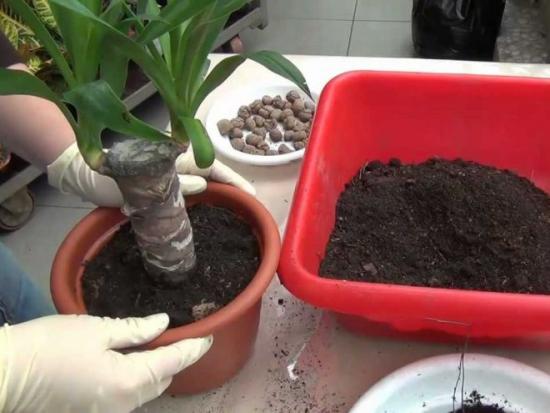

Frost-resistant species include: gray and filamentous false palm. These species can feel great in frosts down to -18-20 degrees below zero.
Characteristics of garden yucca
A significant part of yucca species in natural conditions grows in America and Mexico. Some species are also found in southern Europe. Beautiful and unpretentious, tree-like and evergreen outdoor false palms are of several types, but they all share some common characteristics. A perennial ornamental plant, depending on the species characteristics, may resemble a tree or shrub in appearance.
The average height of the treelike stem can vary from a few centimeters to several meters. The trunk can be either straight or branched. The foliage is lanceolate-linear or xiphoid, collected at the end of the stem in a fairly dense bunch. The plant blooms in summer. Large flowers, white, bell-shaped, collected in multi-flowered and rather long, paniculate inflorescences. After flowering, the flower transforms into a round, dry or fleshy fruit, represented by a polyspermous capsule with black seed material.
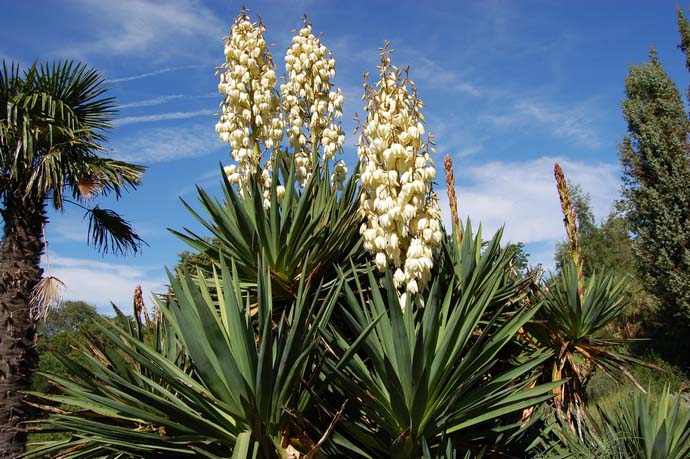

Care features
Taking care of an exotic plant is not difficult. Basically, all care consists in watering, loosening, feeding, protection from frost and diseases.
Watering the false palm is necessary as the top layer of the soil dries. Moreover, the yucca leaves should be sprayed daily in the early morning and late evening, in the absence of sunlight.
The plant is not completely capricious. Yucca needs to be watered, fed and protected from frost on time. If all three conditions are met, it will delight you with its attractive appearance.
The false palm is relatively resistant to diseases. But prevention should be carried out. Leaves from time to time need to be wiped with a cotton pad dipped in vodka. This activity will prevent the occurrence of certain diseases.
The main thing in care is not to overdo it with watering, if you water it too often and abundantly, rotting of the root system can occur. If it is too rare, the leaves of the false palm will begin to curl. Therefore, it is necessary to find a middle ground.
An adult yucca must be pruned. Thus, the plant can be rejuvenated and several more seedlings can be obtained from it for planting; it must be pruned immediately after release from winter insulation.
After cutting the stem, new buds will begin to open, which will become rosettes of leaves. Thanks to this procedure, the plant becomes even more exotic.
Correctly prune the yucca as follows:
- Two days before pruning, the false palm should be watered abundantly.
- Cutting is done with a clean sharpened blade or knife. Approximately 7-9 cm from the level of the rosette of leaves.
- After trimming, wait 10-15 minutes for the trunk to dry. Then, treat the cut with fungicide and crushed charcoal.
- Cover the top with garden varnish.
After two weeks, new shoots will appear. A healthy plant has about 5-6 of them.
Application in garden decor
When using garden yucca in landscape design, it is very important to take into account the botanical features of the culture and follow the basic rules for combining a false palm tree with other ornamental plants. Outdoor false palm tree is great for decorating rock gardens, border decoration of garden paths, rocky-gravel or sandy landscape areas.
Long blooming yucca with bluish-green foliage and white leaf edges is an exquisite adornment of monochrome territories. The plant is suitable for single and group plantings. In flower arrangements, yucca is best complemented by low-growing crops with bright or pastel blooms.
In the spring, in order to form a branching plant, it is recommended to cut the apical part. Sections must be processed with garden pitch or crushed coal. RThe result of such activities is the formation of stem shoots from the awakening buds.
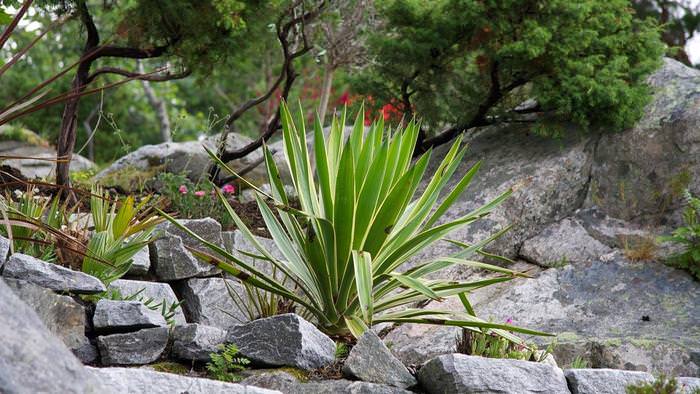

Preparing soil and fertilizers
Yucca is unpretentious, but it will look much more attractive if it is planted in loose soil that does not retain water. It is advisable to add coarse sand when planting in the ground. The soil must be well drained.
Before planting yucca, it is advisable to dig up the soil in advance and clear it of various weeds. Dig deeply, at the same time applying mineral fertilizers for deep soil nutrition. It is good to add to the soil, before planting, black soil or limestone soil.
Top dressing is carried out during the period of active growth, namely: in spring and early summer. At this time, liquid humus, compost and mineral fertilizers will be required.
In the first years of life in the garden, the yucca needs to be fertilized. They have been doing this for two years. Upon reaching the age of 3 years, they begin to fertilize with organic fertilizers. It is not recommended to feed a bush with them at the age of less than 3 years, at this time its root system is not yet sufficiently strong.
Yucca, which is more than 3 years old, is fed with liquid organic fertilizer in early April.
For the development of the vegetative system, in early June, it is necessary to scatter a handful of superphosphate on the top layer of the soil around the plant.Fertilizer will penetrate into the soil when watering or with rain, and will reach the roots.
Watering and subcrusting
Yucca does not require special conditions and care. It should be watered regularly, but infrequently, after the topsoil has dried. Sometimes you can sprinkle water on the leaves, especially if they dry out.
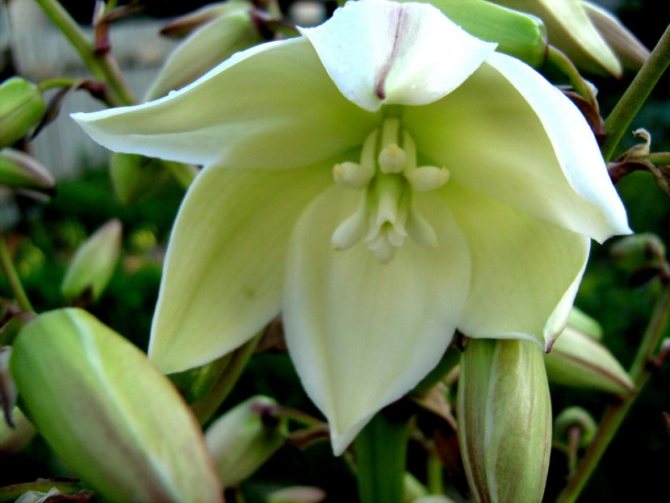

It is best to carry out this procedure in the evening or early in the morning.
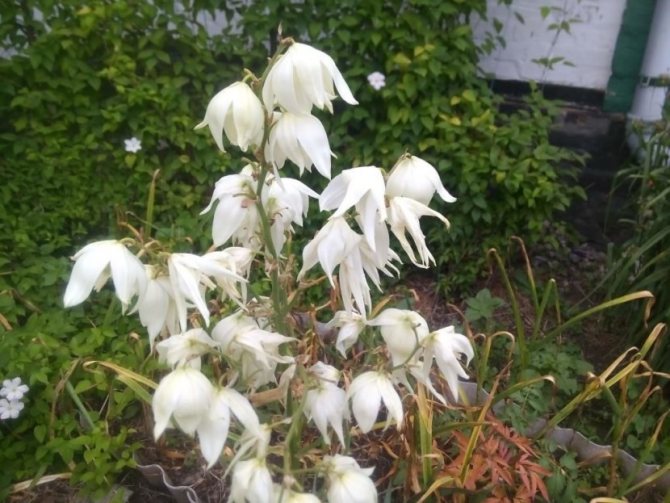

During growth, the plant needs to be fed with minerals twice. First - in May, at the beginning of the growing season, then - immediately after the end of flowering.
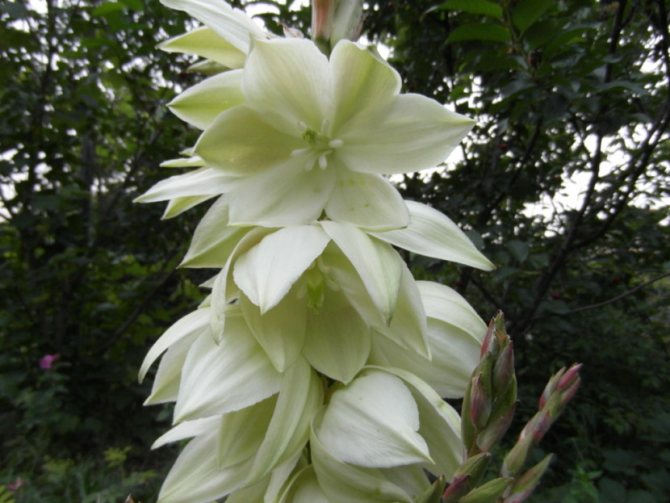

How to properly plant a yucca
Experienced gardeners recommend planting a false palm, after gradually hardening it.
To do this, the newly acquired seedling must be brought out in the sun gradually. In the first 3-4 days in the fresh air, it should be about 1-2 hours. In the next 3-4 days, it can be left outside for 3-4 hours. Then another 5-6 days you can leave it up to 6 hours.
After such hardening, our palm tree can be planted in the prepared soil.
Planted in spring or summer, depending on climatic conditions. During planting, the daytime temperature should be at least 20-22 degrees Celsius. Only under such planting conditions, the root system will prepare for the winter period.
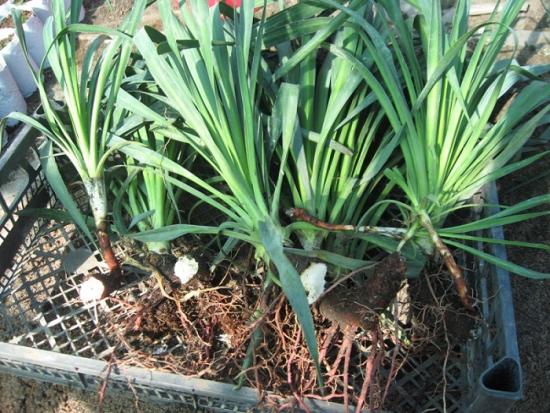

The soil must be well drained. The acidity level of the soil is approximately pH 7.5. Choose an open, well-lit site for planting. Yucca is a southern plant, but the abundance of sunlight does not favorably affect the color of the foliage, so the site should be sunny, but during the daytime sun it is desirable to have partial shade.
To plant a false palm, prepare the soil in advance. Plentifully mulch the site for planting it with sawdust or hay, so that moisture does not evaporate from this site as long as possible.
For planting, you need to dig a deep hole. The size of the fossa should be larger than the size of the root system.
Some plants that cannot tolerate cold are moved indoors for the winter. It is for such plants that you should dig a larger hole and plant the yucca along with the pot.
In this way, it grows outside in summer, like a garden tree, and in the winter, a pot is simply dug out along with a plant. It is very convenient, you do not need to disturb the roots once again.
Yucca care at home


Lighting and location selection
Due to the fact that an adult flower has impressive dimensions, or rather, can reach a height of 2 meters or more, only a very young plant can be placed on the windowsill. But at the same time, be sure to take into account the fact that if the leaves touch the glass, then they will most likely get burned (in the summer - sunny, in winter - frosty). Given this fact, it is best to place the yucca near a window, but remember that it requires a fairly large amount of light. And it can just be obtained near the window located in the southern part of the room (this is especially important in winter). In the warm season, experts recommend moving the flower to fresh air, and there it will be quite comfortable. By the way, in winter, do not forget to regularly ventilate the room in which the yucca is located, but at the same time it is worth remembering that there should be no draft in any case, since it is contraindicated for it.
Temperature regime
In the spring and summer period, this plant is quite suitable for the usual room temperature. In winter, he needs to provide a lower temperature (from 16 to 18 degrees). You should be aware that in winter the air temperature in the room where the yucca is located should not fall below 8 degrees.
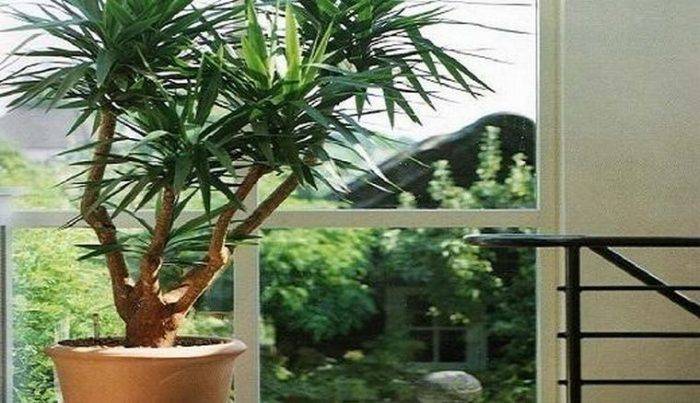

Air humidity and watering rules
In the spring-summer period, plants should be watered often enough and abundantly, or rather, immediately after the top layer of the substrate dries up. If your flower is outside at this time, then if the summer is not dry, it will have enough moisture.However, it is very important to ensure that no water stagnates in the flower pot and tray. Since this can lead to the fact that the root system will begin to rot. In winter, it is necessary to water much less often and less. So, watering is carried out only after the substrate is thoroughly dry (approximately half).
This flower does not need high humidity, which makes it much easier to care for. But in the event that the air in the room is excessively dry, which often happens in winter, and even the plant is in close proximity to heating devices, then it may need regular humidification. As a rule, it is quite enough to spray it once a day. However, it is also necessary to wash and spray the plant at a different time in order to remove dust and dirt.
Fertilizer
It is necessary to feed the yucca while it is actively growing, and this falls on the period from April to August. Fertilizers intended for decorative deciduous plants are suitable for dressing. And they are carried out 1 time in 15-20 days.
How to transplant correctly
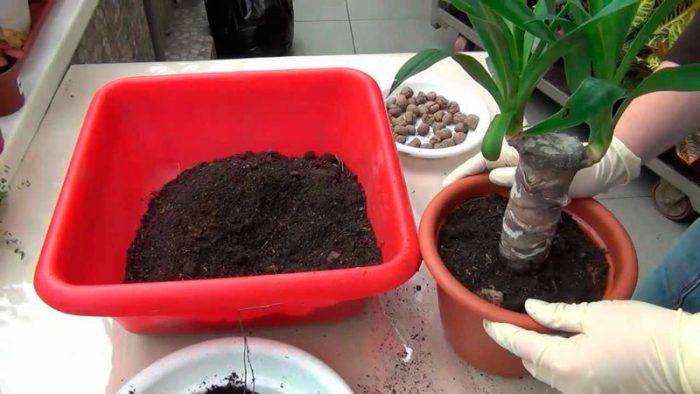

While the flower is young, it is transplanted quite often, or rather, once every 2 years. However, the more the yucca grows, the more difficult it will be to carry out the transplant procedure. After it reaches a fairly large size, it will no longer need to be transplanted, but it will only be necessary to change the topsoil once a year and that's it.
In order for the flower to grow and develop well, it needs a nutritious loose soil that can freely pass both air and water. A purchased soil mixture is quite suitable for transplanting, but if you wish, you can make it yourself. You will need to mix sand, humus, leafy and sod land in a ratio of 2: 1: 2: 2.
Don't forget good drainage!
Very often a flower pot is chosen for a plant, the dimensions of which are far from those recommended by experts. And this is due to the need for the yucca not to fall over, but to stand steadily on the floor. But this can cause the soil to turn sour in the pot. In order to avoid this, you need to add 1/5 of absolutely any baking powder to the soil, for example, such as vermiculite, expanded clay chips, and also perlite.
Breeding features
In order to propagate this adorable flower, you can use several methods, namely: grow it from a seed or root pieces of the trunk, as well as apical cuttings. The latter is the most popular. This is a fairly simple procedure that bears very close resemblance to the reproduction of a flower such as dracaena. But there are still differences. So, for rooting yucca cuttings, it is best to use not an earth mixture, but perlite, sand or vermiculite. You can also root the stalk in plain water poured into a glass.
The best time for yucca to breed is during the spring or early summer weeks. This is because rooting is much worse during the rest of the year, and the mother plant may also suffer.
False palm Yucca: breeding methods, proper planting
How to plant outdoor yucca
Decorative yucca grows and blooms for up to 20 years. But in order to ensure her a comfortable existence, periodic transplants will be required. They are usually transplanted in cases where it has grown strongly and it has become closely spaced with the shoots.
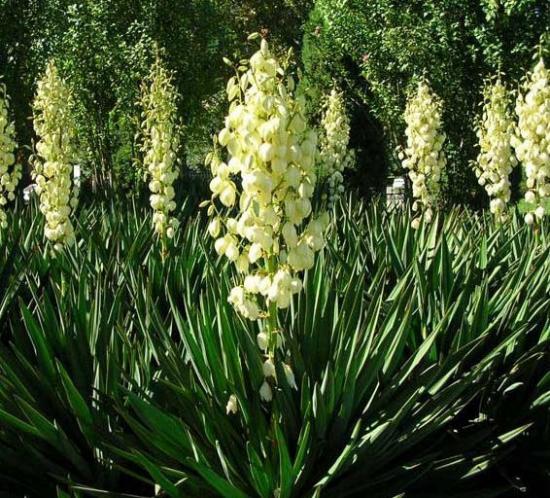

Transplanting is required in cases where:
- Numerous outgrowths appeared and she herself grew greatly. It is necessary to disconnect its processes and plant them on it. The yucca itself requires a transplant too.
- When transplanting a false palm, you need to carefully dig out the root system. Its roots go deep into the ground, so you should dig deeper so as not to damage the roots.
- Transplanted, as a rule, in spring or late summer.
- After transplanting to another site, flowering can only be expected after a year.
Top dressing is performed after 14 days.
Transfer
With a long growth, yucca grows and requires a transplant, but it must be remembered that frequent transplants are harmful to the plant. Experienced gardeners in such cases recommend:
- The transplant is carried out either in the spring or at the end of summer. It is necessary to remove the plant from the ground carefully, without damaging the roots. The appearing processes are separated and planted separately.
- The place of the new landing should not be fundamentally different from the previous one.
- The area for planting yucca should be as light as possible.
- The transplanted plant needs to be fed after fourteen days. Flowering should be expected one year after transplanting.
Features of yucca filamentous transplant
The evergreen perennial shrub yucca filamentous has very interesting leaves. Along the edges of the blue - green leaves, pretty threads hang down, the leaves themselves grow from the rosette. Leaves grow up to 90 centimeters long, up to 4 centimeters wide.
It has practically no trunk as such. Outwardly, it looks like the leaves are growing directly from the ground.
The filamentous false palm feels great in the middle lane. It is often found in the parks of the Moscow region.
Transplanting an adult filamentous yucca plant is not much different from transplanting representatives of another species. The filamentous false palm should be moved to places that are not very dark, open with good illumination.
It is important that there is no high groundwater in the new site where it will be transplanted. They are able to wash away the roots, as a result of which the plant may die.
An adult filamentous yucca cannot be transplanted in places where it will be shaded by large trees. In this case, its leaves will stretch towards the sun, this will negatively affect the appearance. The leaves will fade and become emaciated, the overall appearance of the outlet will not be neat.
For an adult flower, the planting hole is made large. It should be 1 meter deep and 70 centimeters in diameter. The bottom of the planting pit must be covered with drainage. Namely gravel or large crushed stone.
The next layer in the planting pit should be a mixture consisting of soil, black soil, ash and rocky debris. At the end of planting, provide abundant watering.
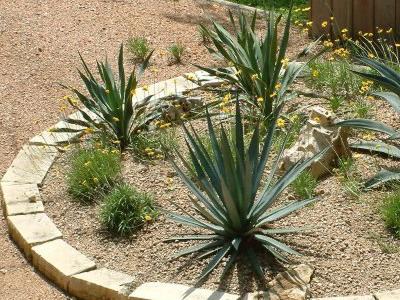

An adult large false palm in a new area can take root for a long time, so it needs quality care. The transplant is carried out only if there is no threat of frost and only in warm weather. If there may still be frosts, it is better not to risk it and postpone the transplant at a later time.
The southern regions of the country are undoubtedly lucky that such a beautiful exotic plant has chosen their climatic conditions.
Growing exotic plants is fun and well worth the effort.
About growing a flower and the features of care - in the video:
The exotic garden yucca plant has been planted on the backyards of Russian flower growers for more than a hundred years. Planting and caring for a garden yucca is not difficult. It looks like an exotic palm tree and is a wonderful decoration for any garden.
Recently, it has been very popular with landscape designers. But ordinary gardeners are also interested in knowing how to care for a plant, which will delight the eye for several years of trouble-free growth.
Why garden yucca does not bloom
Many experienced amateur flower growers know that in indoor conditions yucca almost never blooms. However, when creating an outdoor decorative culture of comfortable, as close as possible to natural, growing conditions, the garden false palm tree blooms with very beautiful and fragrant bell-shaped panicle inflorescences.
The lack of flowering can signal gross violations of the cultivation technology or improper care of the plant.Among other things, the period of entry into the flowering phase can depend on the characteristics of the variety. Some species bloom in the first year after planting., and it is possible to bloom in the fourth and even fifth year of life. It should be remembered that a plant that is in good conditions, does not freeze in winter and does not suffer from waterlogging, blooms annually and is very abundant.
Description of the plant
In its natural environment, yucca is found in Central and North America and Mexico. There are about 20 plant species that can winter outdoors in a subtropical climate. In Russia, yucca is planted in city squares and parks on the Black Sea coast.
The yucca plant belongs to the Agave family. This is a tree-like perennial shrub that belongs to evergreens. It has rigid xiphoid leaves that grow in a spiral, forming a kind of rosette.
In the center of the rosette, a peduncle rises in the form of a huge panicle. On it there are flowers of a drooping type, having a white or yellowish color.
One inflorescence per season can give up to 200 bells, the length of which reaches 7 cm and the diameter up to 5. At the end of flowering, a fruit with seeds is formed. During the flowering period, the plant looks very attractive, the flowers attract many insects that are engaged in pollination.
General information about the plant
Yucca is an evergreen tree shrub from the Agave family, native to the American continent. Natural habitat - subtropics and tropics, in which there are long dry summers and not very cold winters.
In our conditions, 3 varieties of yucca are planted in open ground: filamentous, variegated and gray. The most common is filamentous yucca. It has long, dense green leaves in the shape of a sword. Their length reaches 50 -70 cm, width - 3-5 cm. The plant is not tall, leaves grow from a small stem, forming a dense rosette.
On the leaves, growths are formed along the edges that resemble white threads. If the plant is watched, it blooms every year. The inflorescence reaches 2.5 m in height. It consists of many small hanging white, pink or greenish bells, the diameter of which is 5-6 cm. The duration of flowering with appropriate care is 1.5-2 months.
The plant has a well-developed root system. It easily tolerates drought, and the filamentous species is able to withstand temperatures down to -25 degrees. The variegated yucca is remarkable for its leaves, which have a light border at the edges. Gray - has unusual peduncles that resemble a thick candle.
Types of garden yucca
In the vastness of Russia, two types of plants are grown in open ground.
Yucca Sizaya
The plant has a short trunk and long leaves that grow up to 90 cm in length. The leaves are thin, have grayish-green leaves with a light stripe along the edges. The flowers of the plant are yellowish or white with a green tint, the inflorescences are narrow and finely branched.
The peduncle can reach three meters. The plant is unpretentious to the soil, can grow well on sand.
Yucca Filamentous
This is a bush that has almost no trunk, with xiphoid leaves that grow up to 70 cm. Their width can be from 3 to 10 cm. Their edges are framed with noticeably protruding threads, their top is slightly bent.
The panicle of the peduncle protrudes 2.5 m, strewn with beige-white drooping bells.
Most yucca species can only grow in tropical climates. Some species throw out giant peduncles reaching heights of up to 10 m.
Yucca is filamentous. Video:
Yucca glauca
Yucca gray or "The Lord's Candle" is a perennial evergreen, monoecious, stemless, or woody-stemmed plant. The foliage is linear, gray-green, 40-70 cm long, 0.8-1.2 cm wide, with sparse and thin, curled threads at the edges. Peduncle racemose and high.The inflorescence is branched, collected from bell-shaped, white, greenish-white or yellowish flowers.
An exotic-looking garden evergreen that can easily withstand short temperature drops to minus 28-30 ° C even without shelter protection. The root system is of a buried type, therefore it rarely freezes out, but in regions with long and harsh winters, an ornamental culture needs a dry air shelter. Improper protective measures are the main cause of damping out or death of a tropical plant.
Sizaya Yucca belongs to extremely vigorous plants, and is able to grow well even on sandy soils and without additional irrigation measures. This garden plant is quite aggressive in nature, so the removal of weeds when grown in flower beds is practically not required. The culture blooms at the age of four, and the flowers retain their decorative effect for about a month. Yucca is best propagated by numerous side suckers, since seed material is almost never formed, and using store seeds for sowing allows you to get the first flowering only after a few years.
Other varieties of false palm are grown as container or tub plants for outdoor use during the summer. Garden varieties and varieties are perfect for landscaping the most arid and rocky-sandy garden areas.
Yucca garden: care and transplant
If you want to refine your summer cottage area with a yucca planting, it is recommended that you familiarize yourself with the features and rules of planting.
Preparing for transplant
Yucca for planting must be bought in a specialized flower shop. In this way, the acquisition of a non-varietal plant can be avoided. It should not be planted immediately in open ground - it is better to pre-harden it.
To do this, within two weeks, it is required to take out the pot with the plant, first for 1-2 hours, and then increase the time spent outside.
If the plant is in the shade for a long time, it loses its visual appeal - the leaves become thinner, change color, and the trunk becomes thin and stretched.
It is unpretentious to the composition of the soil - it is enough for it to be loose, easily ventilated and does not retain moisture. If the soil in the flowerbed, where it was decided to plant the plant, is dense, sand should be added to it.
A drainage layer of gravel should be placed at the bottom of the pit, and if the soil is poor (there is a lack of useful vitamins and minerals), add humus.
How to plant a yucca?
For small seedlings, small holes need to be dug. But it must be borne in mind that the yucca flower will grow. But a yucca aged 3 years must be planted in a hole with a diameter of 70-100 cm. The root of the plant needs to be buried 40-50 cm.
Yuka garden flower - care, planting
At the end of planting, the yucca must be equipped with small irrigation, cleaning processes, periodic soil fertilization and pruning. Sanitary work must include the elimination of dead leaves and peduncles.
Temperature and lighting in the garden
Garden yucca is very fond of sun and warmth. For this reason, it is necessary to plant it in free and well-lit places. Partial shade will also do. The flaw in light leads to the fact that the crown is made the least rich. Dryness is not terrible for the plant. Reproduction is carried out at a temperature of approximately 20 degrees. Severe winters are not terrible for yucca if it is successfully and effectively hidden.
Humidity and watering
The land should not be intensely wet, since the plant does not like powerful moisture and rich watering. The leaves speak about the need for watering: when they are smoothed out, and the threads are slightly wrapped around the edges, there is no need for watering, and if the leaves curl up and the threads drop,then the plant needs watering. In winter, garden yucca is equally required to irrigate, but much less. It is very important to avoid over-watering during the winter. This has the ability to plunge into decomposition of the roots.
How to keep a plant in winter?
Yucca filamentous and gray are frost-resistant plant species. They perfectly tolerate a drop in temperature down to -20 degrees. Young plants must be closed in the first two years.
The same should be done in places with harsh climatic conditions. Warming can be done in two ways.
The first way
Work must be done in dry weather.
Here you need to collect all the leaves in a bunch and tie them along the entire length with twine. In order not to freeze the ground around the outlet, spread the bottom layer of leaves on the ground.
Cover them with dry leaves of other plants and press down with boards or sticks so that they are not blown away by the wind. Wrap the tied sketches in plastic, and cover the base of the trunk with dry earth.
Second way
Build a wooden box the size of the yucca bush and cover the plant with it. Insulate the box on top with roofing felt, foam or other similar material. Cover the entire structure with straw or spruce branches. To prevent the insulation from being blown away by the wind, wrap it with foil.
It is necessary to carry out the warming procedure in late October or early November. You can free the yucca from captivity in the spring, when the night frosts end.
Yucca in the open field, varieties of wintering yucca in the open field
Not so long ago, yucca was grown exclusively in pots, pampering with fresh air only in the warm season, decorating it only on balconies and summer terraces. Over time, the number of varieties increased and many gardeners began to plant this exotic flower in open soil. Some varieties are cold-resistant enough to withstand temperatures below 20C. With proper care and shelter, the yucca is not in danger of death, and with the onset of warmth, she again pleases passers-by with snow-white bell tassels.
Among the most cold-resistant varieties, the following are worth noting:
- filamentous yucca;
- yucca gray;
- yucca elephant.
Yucca breeding
Garden yucca can be propagated in several ways:
- cuttings;
- seeds;
- stem;
- dividing the bush.
The simplest way is the latter. It is carried out during the transplantation of an overgrown bush in the spring.
In the question of how to plant a yucca, they adhere to the following sequence:
- It should be carefully dug up and the shoots, along with shoots and roots, should be separated. The root system of the plant goes deep into the ground, so you need to dig deeper so as not to cut the rhizomes.
- Then each seedling is planted in a permanent place and watered.
- Caring for him is the same as for a regular bush.
If it was decided to grow a yucca from a stem, you must:
- Cut the trunk just above the rhizome and dry it a little.
- Then it needs to be planted in sand, laying it horizontally.
- Leave the stem in a warm place and keep the sand moist.
- When roots appear, cut the stem into pieces and plant all the segments separately.
Cutting requires cutting off the stem at the very top. It should be with leaves. Dry the stalk, and then place it in a pot of sand or perlite. Keep the substrate moist by spraying periodically.
To breed yucca with seeds, you must:
- Collect seeds at the end of August from a faded plant or buy in a store. Seeds are round in appearance, the diameter reaches 5-10 mm.
- Sow seeds in a container with soil consisting of equal parts of leafy, turfy soil and sand. Seedlings appear after a month.
- When the first two leaves come out, you need to dive them into separate cups. Only when the bushes grow and get stronger can they be planted in open ground.
Such plants can bloom only in the third year, so you should be patient and not do unnecessary steps in caring for the shrub.
Description and origin of the garden palm
The homeland of the evergreen yucca is America. This plant belongs to the Asparagus family, in its appearance it resembles a Mediterranean agave, but unlike the latter, its leaves form a dense spiral rosette.
Domestic representatives of this family have a well-developed stem, while in specimens growing in open ground, it is almost absent, the rosettes are located tightly pressed to the ground. The peduncle is represented by a large panicle, the flowers of which are lowered down like bells. It protrudes from the central part of the rosettes, reaching a height of 1.5 to 3 meters. The exotic palm is propagated by root suckers.
In America and Mexico, the industrial cultivation of the agave relative of the yuca is practiced on huge plantations. The world famous tequila is produced from its stem.
The exotic appearance of the plant, it would seem, presupposes comfortable natural growing conditions, but the tropics and subtropics of America, the natural environment for the growth of yucca, do not have such characteristics at all. The plant is adapted to prolonged drought and sudden changes in temperature. Such amazing endurance allowed the plant to spread from the southern regions to the middle belt of the continents.
Pests and diseases
Yucca is not afraid of various pests and infections.
Usually it is attacked by aphids, if it is in the area on neighboring plants. It is eliminated with infusions of herbs, a solution of laundry soap, wiping all the leaves and inflorescences with it. You can also use insecticides.
Pests are dangerous for her: scale insects, mealy worms and spider mites. But with good care and normal growing conditions, infection and attacks are very rare.
If the plant is attacked by insects, white or brown spots appear on the leaves, it becomes lethargic and stops blooming.
Of the diseases, lesions of various types are considered more dangerous by a fungus - rotten spots form on the leaves, the stem becomes soft. It is necessary to cut off the affected areas of the leaves, treat the soil around the trunk and the plant itself with a fungicide.
Yucca flower, how to care if you have problems
Yucca, like all plants, can be attacked by pests or diseases.
The most common are slugs, whitefly, scale insects, aphids.
The latter easily falls on flowers, which quickly dry up and fall off. Wood ash in combination with a soapy solution will help in the fight not only against aphids, but also against other insects.
You need to take 0.250 wood ash, pour water (10 liters) and bring to a boil, adding 0.50 g of ordinary laundry soap (grated). When the resulting solution has completely cooled down, immediately process the affected leaves.
Possible problems
- Dry air and cold drafts contribute to the formation of unkempt brown leaf tips that spoil the view.
- Brown spots all over the leaf may indicate fungal infections caused by possible over-watering.
- Bright sun rays can affect the appearance of light, dry spots.
Reproduction
Yucca reproduces well vegetatively. This is the safest and easiest way, besides, the plant gives many lateral shoots.
How to propagate yucca garden shoots
Outdoors, yucca forms a bush. Over time, it becomes overgrown with daughter outlets, which may be at some distance from the mother plant or come out with it from almost the same place.
This leads to the following:
- the bush thickens;
- the area of plant nutrition decreases;
- interlacing of roots impairs the permeability of the soil.
As a result:
- yucca weakens and becomes shallow;
- roots can rot;
- decorativeness decreases;
- the plant may not have enough resources to bloom.
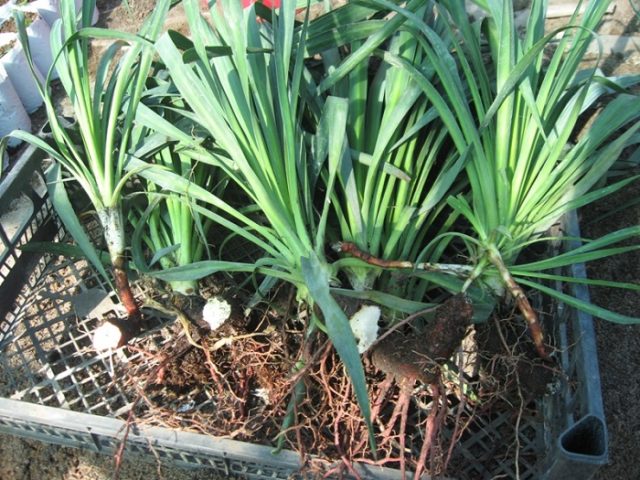

Once every 3-4 years, daughter outlets must be removed. The easiest way is to dig up shoots that are no less than 15-20 cm from the mother bush. If everything is done carefully, the root system of an adult yucca will be minimally injured. The recommended planting density is 3-5 plants per sq. m.
Comment! A daughter rosette with a part of the root is a full-fledged garden yucca plant. You need to plant it accordingly. If the yucca is sold with an open root, there is a 99% chance that it is nothing more than a child offspring at the age of 2-3 years.
The shoots can be planted in spring or autumn. Each time has its own advantages and disadvantages. If you plant the yucca in the spring, it will better endure the previous winter thanks to the thickened planting. But the root can be injured so much that the adult plant will not have time to restore it, and will miss flowering.
Here, it is better to proceed from considerations of the safety of the yucca, and not focus on decorative properties. It is better not to see flowers for one season than to lose the plant completely, perhaps even more than one.
Important! In the south, the shoots are planted in the fall, in the Central lane and in the North - in the spring.
Reproduction of yucca garden by dividing the bush
How to plant garden yucca was described in the previous paragraph. Why describe the division of the bush separately? The fact is that some of the daughter outlets fit tightly to the mother plant. They can be separated only by digging the bush completely.


It happens that the old yucca even dries up completely after flowering, since it has expended all its strength on the formation of buds. And a weakened plant cannot replenish the supply of nutrients, not withstanding competition with young shoots. This serves as a signal for the division of the bush.
In this case, dig up the yucca completely, along with the daughter sockets. They are separated with a sharp, sterile knife, and seated in a suitable place. You need to dig carefully and deeply - after all, the root of only one plant extends to 60-70 cm, and in an overgrown bush there are several of them.
Important! Places of cuts before planting are sprinkled with crushed activated carbon and dried a little.
Otherwise, the division is no different from the reproduction and planting of yucca with garden shoots.
Cuttings
Garden yucca can be propagated by root cuttings. Parts of the stem are not used, since the plant simply does not have it. Even Yucca Sizaya does not always form a short stem, only at an “advanced” age. Yes, and cutting it is inconvenient - it is easy to make a mistake and destroy the plant, the operation is carried out only to save a valuable specimen, it is propagated by daughter sockets. Yucca Glorious, after the formation of the trunk, usually does not hibernate in the ground, and becomes a room, and not a garden culture.


The plant simply propagates by root cuttings. It is impossible to dig them on purpose - you can destroy the yucca, but when planting offspring or dividing a bush, many "extra" pieces of root remain. Instead of throwing them away, you need to carefully examine them, choose those that have dormant buds.
Important! Cuttings can only be planted in the spring, in the fall the dormant period begins and they will simply disappear.
Choose healthy, strong roots, cut into cuttings 5-10 cm long so that each has a growth point. The section is treated with crushed activated carbon mixed with a crushed heteroauxin tablet.
Comment! This magical mixture will help rooting cuttings of any plant.
The wound surface is allowed to tighten and planted in a peat-sand mixture or perlite. To do this, the cuttings are laid out on a wet substrate, pointing up the sleeping bud, pressed a little, and sprinkled with a thin layer of soil. The surface is slightly sprayed daily with warm water from a household spray bottle.
The cuttings will start to grow in 2-3 weeks. At the end of the season, young plants are separated from each other and planted in a permanent place.
Seeds
This is the most difficult and unreliable way of yucca breeding.If it is possible to get a daughter outlet, it is better not to mess with the seedlings. It is impossible to collect your own seeds, since pollination is carried out exclusively by butterflies that live only in the homeland of the plant. And no one can vouch for the quality of purchased planting material.
Nevertheless, the seeds can be sown in light soil, covered with foil and placed in a warm place. The first 10 days, the soil must be regularly moistened, the planting must be aired. After emergence, they are dived into separate cups. Young plants are planted in open ground after 2 years.


Pest and disease control
Outlandish for cold climates, yucca has excellent resistance to parasites and diseases. There is only one thing that threatens the shrub, and then only at the flowering stage - aphids. As a rule, it turns into gorgeous yucca flowers when close to infected bushes, for example, roses.
It is necessary to fight with her on pleiochasia either by biomedical methods (infusions, broths, soap solutions) or insecticides. But such methods are focused on preventing the distribution of aphids over the site. Since the flower stalks of yucca at the end of wilting, it is possible to trim and exterminate, removing the difficulty together with beautiful flowers.
Container yuccas have the ability to suffer from spider mites, mealybugs, scale insects and whiteflies, mainly if they overwinter in the 1st room with home plantings. To fight these parasites, you should start immediately with treating them with insecticides.
Let's summarize
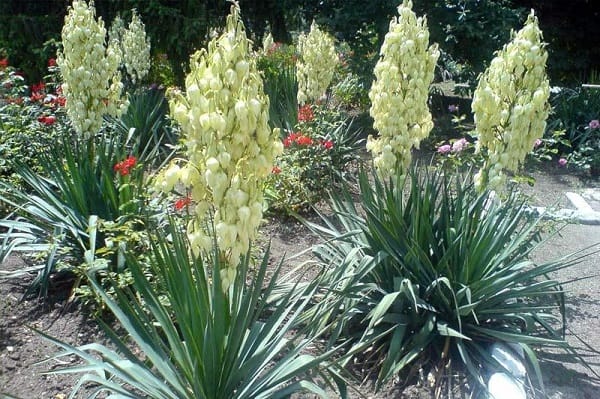

- Garden (street) yucca is a herbaceous ornamental plant with large lanceolate leaves and a very noticeable white inflorescence, consisting of many bells.
- When planting a plant, two points are considered important: firstly, the soil should not be too heavy, and secondly, choose a sunny and not wet area for a flower.
- This perennial can winter in our garden when the frost is down to -20. In the southern regions, the yucca does not even need to be covered, only the leaves should be tied in a sheaf to avoid breaking off due to snow.
Did you know that besides only decorative qualities, filamentous yucca also has medicinal properties? Which ones and how to apply them, the mistress of an old and very well-groomed, flowering bush will explain:
Is it possible to accelerate the flowering of yucca
Subject to all the conditions of care, garden yucca can please with snow-white brushes the next year. To do this, it is necessary to provide it with adequate nutrition with nitrogen fertilizers in the spring, water it in a timely manner and moderately, as well as provide loosening of the soil and weeding of weeds, which prevent the flow of nutrients to the root system.
To protect the topsoil from drying out, which can adversely affect the plant, it is recommended to mulch the soil with peat, or with decorative crushed stone, if the yucca is part of a rockaria or alpine slide.
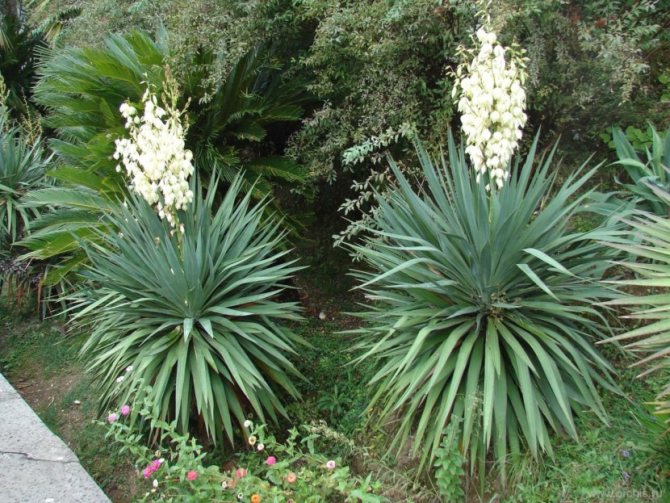

Advice
Yucca, with proper care, will become a real decoration of the personal plot. Experienced gardeners recommend observing the following rules when growing this unusual plant:
- transplanting should be carried out only in summer and early autumn, so as not to disturb the plant during the growing season;
- when digging, you need to carefully work with the root system, which can go into the ground up to 70 cm;
- the shoot that appears on the bush can be cut off and used for propagation;
- the new transplant site should not differ from the old one in terms of soil composition, soil quality and protection from drafts.
Garden yucca is the best choice for decorating a personal plot. Subject to the rules of care, it does not cause any problems, it blooms profusely and for a long time. The plant is unpretentious to the soil, withstands low temperatures and rarely becomes infected with diseases and pests. It is considered one of the most successful flowers for beginner gardeners.
Stems
To reproduce yucca in this way, you will need to cut off several pieces of the trunks and dry them thoroughly. After that, it is necessary to plant the stems in the river sand in a horizontal state. The rooting process should take place at room temperature.
The substrate must be kept moist at all times. As soon as you see the first sprouts with roots, you need to cut the stem into several pieces and plant them separately in the ground. Each segment must contain at least one branch.
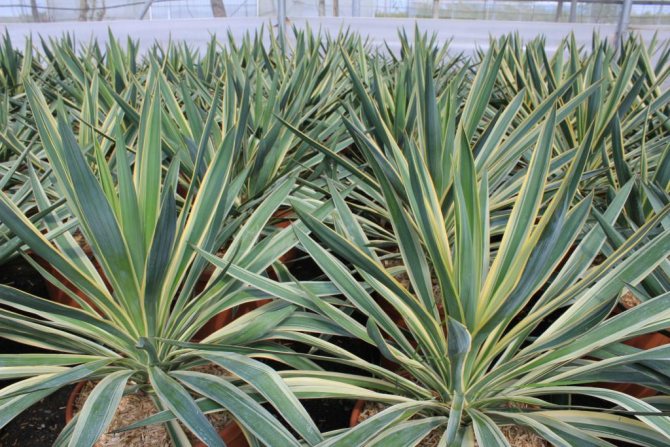

Useful properties of yucca
In addition to its charming appearance, the plant has a beneficial effect on the human body. Due to its unique properties, it is used in natural medicine.
Yucca extract contains:
- saponins - have a diuretic, detoxifying and anti-inflammatory effect, increase the secretion of mucus, digestive juices and bile;
- antioxidants - neutralize the adverse effects of free radicals, strengthen the immune system;
- enzymes - active substances that accelerate the reactions in the body, are necessary for the human body;
- Resveratrol - May reduce the signs of aging.
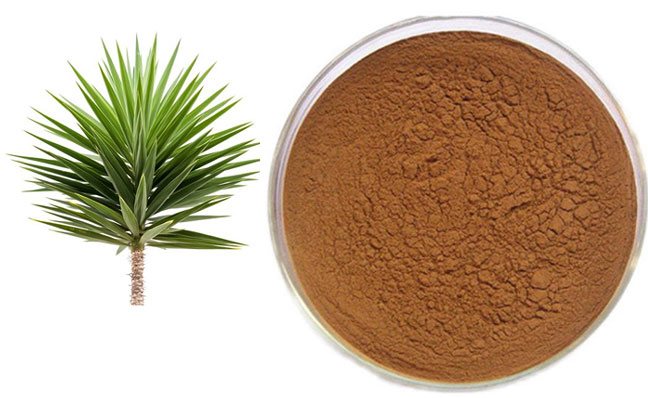

Thanks to these compounds, yucca has a number of properties beneficial to the human body.
- Detoxification function. Yucca extract cleanses the internal organs of toxins. Active enzymes dissolve poisons that accumulate in the folds of the intestine so that they do not penetrate into other internal organs. This promotes the regeneration of the intestinal mucosa, which leads to a faster recovery of the beneficial bacterial flora. The extract is recommended for people with digestive disorders and colitis. After thorough cleansing of the intestines from various toxic substances, enzymes begin to cleanse the internal organs, bones and joints.
- The saponins in juice are effective in treating joints and bones. Indians often used yucca ointments for rheumatic pains and in people with joint stiffness. Yucca supplements the micronutrients needed for joints and bones, and reduces pain associated with their disease.
- A number of ingredients in yucca extract support the body's natural detoxification process.
- Antiseptic, anti-inflammatory and antibacterial properties are found in the juice. Recommended for people with chronic diseases, strengthens the immune system, promotes the absorption of nutrients.
- It has a beneficial effect on the digestive system. Accelerates metabolism, improves digestion, assimilation of nutrients. Allows you to remove toxins from fat cells. Reduces the signs of cellulite and is especially indicated for obese and overweight people. Reduces cholesterol levels, which are responsible for many diseases, including hypertension, heart attack and atherosclerosis.
- Yucca extract has a beneficial effect on the entire body. Restores individual organs, joints and bones, improves well-being. Thanks to the resveratrol content, it improves the appearance of the skin, hair and nails, and influences mental and physical activity. Antioxidants help prevent wrinkles and skin discoloration.
Attention! Before using the juice and extract, you should consult your doctor. This is especially true for pregnant women, people with chronic diseases of the digestive tract, children.
The yucca extract treatment is especially recommended for:
- elderly people who have problems with concentration, memory, joint and bone pain;
- active people who are often in contact with various types of exogenous toxins: air pollution, hard water, poor nutrition;
- people experiencing fatigue, exhaustion, inflammation, infections, headaches.
Attention! Due to the strong detoxifying properties of yucca in the early days, it should be used preferably on holidays or weekends.
While consuming yucca extract, you may experience:
- diarrhea,
- excessive urination
- heavy sweating.
Growing
How is garden yucca propagated? Grow filamentous yucca from seeds or propagate vegetatively.
For the first way it is necessary to soak the seeds in warm water for a day, and then evenly distribute them over the container and sprinkle them with light peat or leafy soil. The container with the seeds must be covered with foil, then put in a warm, shaded place and periodically ventilated. Under favorable conditions, seedlings should appear in a month.
Second way involves rooting the cut off top of the "palm". The cut must be dried, cut off the lower leaves, and collect all the remaining ones to the middle of the trunk. The stalk is planted in moistened sand, covered with polyethylene and placed in a warm place, airing the "greenhouse" from time to time. After 3-4 weeks, when the cutting takes root, it can be planted in a permanent place.
Also suitable for germination trunk fragments... They should be laid out on moistened sand, pressing firmly against it, and covered with polyethylene. When new shoots appear on the stem from the buds, it must be divided so that a sprout with roots remains on each fragment. They can be seated in their permanent places and go to the usual care scheme.
Reproduction of garden yucca is possible and dividing the bush... Given that the plant grows very quickly, this method of propagation is very effective and simple. In addition, it will not let the decorative "palms" grow too thickly.
When the yucca blooms
Often, garden yucca blooms 3 years after planting, but under favorable conditions, beautiful inflorescences can appear the next year after rooting. White bells adorn the peduncle for 2-3 weeks, and in some cases, for a whole month. For long-term flowering of yucca, it is important to provide favorable conditions - complete fertilization, sufficient moisture and lighting.
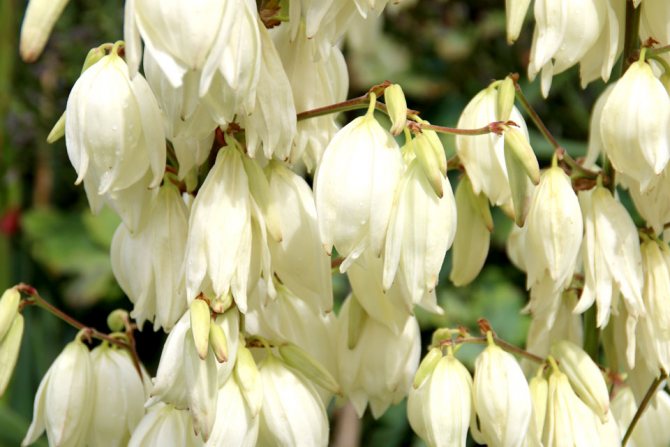

Popular varieties of street yucca: description and characteristics
Before planting this flower on the street, you need to choose the right variety of it. There are several types of yucca that have certain characteristics.
Filamentous
This culture is native to North America. It is a stemless bush whose long leaves grow directly from the roots. During the summer, offspring appear on the roots, which are used for reproduction. The plant is resistant to frost, but it is recommended to cover it for the winter.
Sizaya
This plant is native to the western regions of America. This type of yucca has a short stem. Sleeping buds are located on it. Their growth begins when the leaves collected in a bunch die. The inflorescences of the culture reach 1 meter in height. They are covered with a large number of white bells.
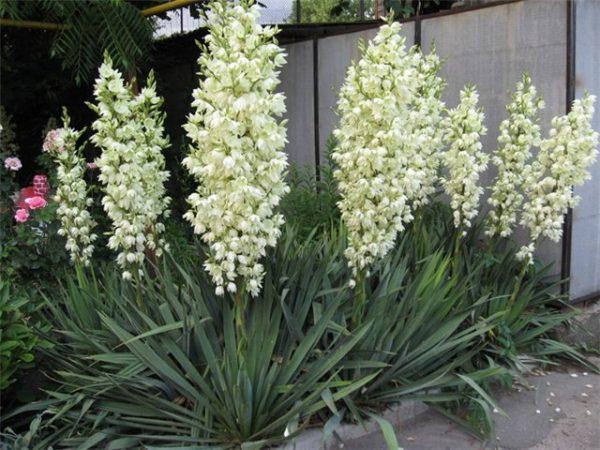

False Palm Pruning Process
Upon reaching the trunk of the yucca more than seven centimeters in diameter, it is clipped. This is done in order to form a crown of the correct shape on the palm tree. Do not forget that after the procedure is performed, the growth of the plant stops.
You need to cut as high as possible from the base of the trunk... The plant needs to be properly watered every three to four days. The cut part is placed in a moist rooting medium. Thanks to the pruning method, the owner forms the height of the plant he needs.


Autumn and winter care
Garden yucca is considered quite frost-resistant, it really tolerates snow that falls in autumn or spring, without visible losses, but only if it melts in 2-3 days. In general, it can withstand temperatures as low as -15 degrees.
And constant cold and winter without snow are deadly for the plant. Therefore, it is necessary to insulate it before the onset of winter frosts, especially specimens up to 2-3 years old. Frosts are more dangerous for the growing point (the core of the rosette), since the roots are more resistant and better protected.
How to cover the garden yucca for the winter?
- In late October - early November, in dry weather, press the leaves to the crown around the trunk ("bunch / tail") and carefully pull the twine / tape along the entire length. It will turn out to be a kind of column. So we will protect the top of the plant from freezing, and the leaves from mechanical damage.
- Next, wrap the flower in a thick cloth, burlap or agrofiber and put on a wooden box without a bottom on top.
- Pour dry leaves, spruce branches or sawdust on top and on all sides of the box. If there is no box, then put branches or boards that will press the leaves to the ground and prevent the wind from blowing them away.
- Next, cover the structure with the plant with foil and fix it securely. This shelter will allow you to preserve the yucca in winter as it will not allow moisture from the outside and has an air cushion inside.
- Young specimens are more sensitive to excess moisture in winter. Therefore, in early spring it is better to remove excess snow. In the spring, with the onset of stable heat, the structure is disassembled. As young leaves begin to grow, last year's old yellowed ones are cut with pruning shears.
- By the way, even in the conditions of the Moscow region and central Russia, street yucca successfully winters in such a shelter. In the south of Russia, you can do without serious shelter, it is enough to complete the first three points.
When to open yucca after winter?
In the spring (mid to late March), remove the winter shelter from the yucca and scoop up the dry leaves. Then cover with burlap and remove after stable heat (early April).
The approximate dates for the Moscow region are indicated.
Top dressing and watering
Care, planting of a yuka garden flower cannot do without proper feeding and watering. Actually, such procedures should be carried out with high quality throughout the entire life of an ornamental shrub. It is worth noting that garden yucca is a rather unpretentious plant, but this does not mean at all that you can not take care of it at all. The flower needs infrequent, but regular watering, especially in the summer. The need for this procedure can be judged by how dry the top layer of the soil is.
For extra care, it is recommended to spray the bush leaves from time to time with a spray bottle, especially if they begin to dry out or wilt. Such a procedure must necessarily be carried out either early in the morning or late in the evening.
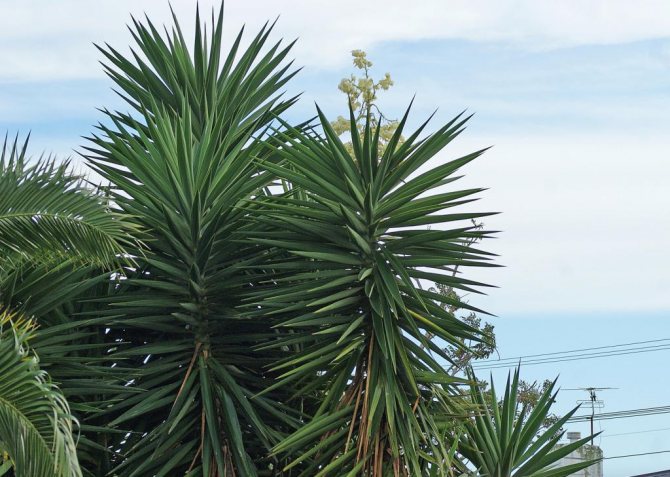

A couple of times during the period of active growth, complex mineral fertilizers are applied to the soil, designed specifically for succulents. The first time feeding is carried out at the beginning of the growing season, which begins in early May. The second top dressing is right after the yucca blooms.
How to feed yucca in spring
With the onset of spring warmth, a tropical plant begins a phase of active growth, which requires additional nutrients. At this stage, it is recommended to fertilize yucca with complex mineral preparations that are used for succulents.
If a plant was planted in the spring, then feeding must be done no earlier than 14 days later. For this, fertilizers are used that stimulate the growth of the root system and accelerate the adaptation of the plant.
Landing
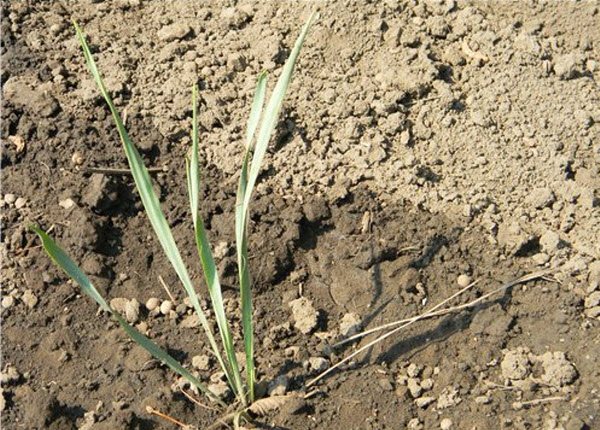

Yucca is planted by cuttings or shoots in the spring, when there is no threat of night frosts, or in the fall. In this case, the flower must be prepared for winter. It is not recommended to propagate by seeds, since it is difficult to achieve harmonious growth in the middle latitudes of Russia. Landing Algorithm:
- After purchasing the planting material, the plant must be pre-hardened. To do this, the seedling is taken out into the street or balcony, first for 1-2 hours, gradually increasing the time by 1 hour every 2 days.
- Yucca is planted in individual pits 70x70 cm and up to 50 cm deep. Drainage (gravel or coarse sand) should be laid on the bottom and 50 g of wood ash should be added. Then the bush is carefully planted in a prepared place and covered with a substrate.
- After planting, the young plant should be watered moderately and mulched.
The work should be carried out in tight gloves to avoid injuries and cuts - the yucca leaves are very sharp. In a favorable climate, the plant can comfortably stay in one place for up to 15 years. Flowering begins only at 2-3 years of age.
Is it worth digging up a plant for the winter?
Now you know about the basic rules for the care and planting of garden yucca. The problem may lie in preparing the plant for the wintering period, since most gardeners have no idea whether to dig up a tropical plant or not. Of course, this is not worth doing. Such a procedure is simply meaningless, since most of the varieties grown in our country are frost-resistant crops. In the northern regions of Russia, where winters are particularly harsh, it is recommended to cover the garden yucca so that the shrub can more easily endure severe frosts.
Loosening the soil and weeding
One of the important procedures that is best done on time is loosening the soil. The permeability of the soil for garden yucca is very important, and regular prevention of soil compaction and crusting will allow the plant to achieve the best winter hardiness and the most abundant flowering.
Small weeds of yucca do not annoy, but it is better to carry out weeding in a timely manner.
Yucca gratefully responds to mulching, but for the plant it is better to use materials that play the function of top drainage. Yucca looks great with stone chips or screenings, decorative mulch.
Planting work
It is necessary to plant garden yucca in the spring, flower care is minimal. In order for the plant to be strong by winter, planting work should begin no earlier than May. By this time, the night temperature should be over 10 degrees.
Note!
Florists most often grow seedlings, cuttings. It is inappropriate to sow seeds, this work is carried out by specialists in laboratories.


What is needed for sowing:
- choose a sunny site;
- dig a hole 50 cm deep;
- lay out stone, crushed stone, brick on the bottom;
- sprinkle with fertile soil and ash;
- put a seedling in the hole, sprinkle the roots with soil;
- watering, mulching.
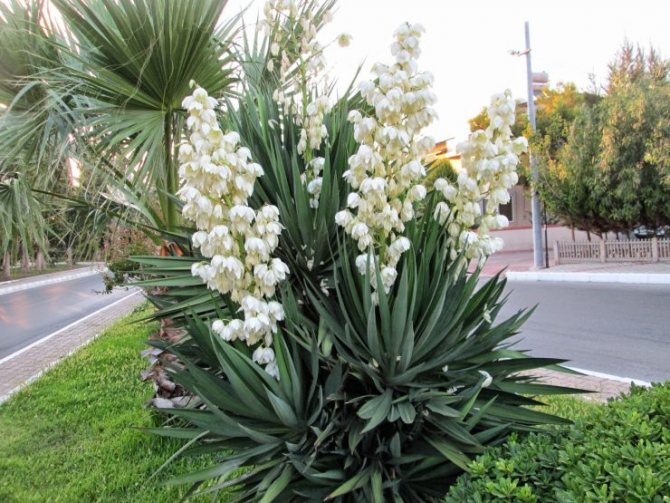

Planting work has been completed. In order for the bushes to take root, they need to be properly looked after.
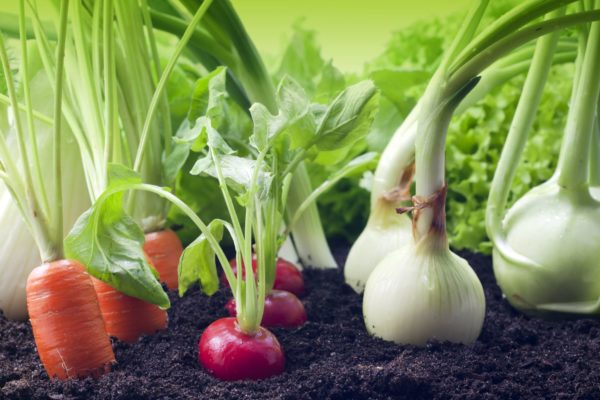

Garden yucca and its medicinal properties
Actually, yucca is called garden yucca, which can be grown on personal plots. This is not one of more than 30 existing species, but simply a statement of the fact that a plant can withstand winter outdoors.
Reference! You can find the statement that there are 20 or 40 types of yucca. The article contains the figure given by the Dutch florist and breeder Jan Van der Neer, who is considered a world-class expert.
Description of yucca
Yucca is an evergreen plant belonging to the Agave family, originating from Central America. There are more than 30 species, among which there are rosette and tree species.
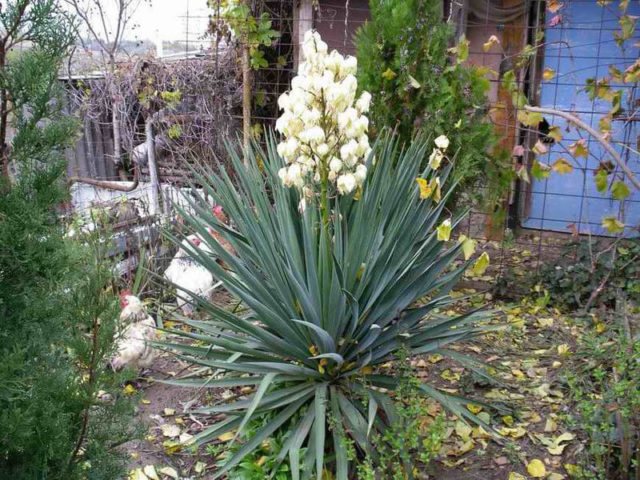

Comment! Some taxonomists attribute yucca to the Asparagus family.
Hard xiphoid leaves, gray or green, grow in length from 25 to 100 cm, width 1-8 cm. Depending on the type, they are collected in a rosette or arranged in bunches at the tops of the trunks. The edge of the sheet plate can be smooth, serrated, covered with threads. The tips are pointed, sometimes they turn into a rather large thorn; in different species, the leaves can be straight and drooping.
The flowers of the plant are collected in a panicle with a height of 50 to 250 cm. Each one contains up to 300 white, cream, greenish-cream, yellow buds. The shape of the flowers is bell-shaped or cupped, the size is up to 7 cm, the smell is strong, pleasant. Each bud hangs on a small stem.
The fruit of the plant is a capsule or fleshy berry, edible in some species. In Russian conditions, it is almost impossible to obtain seeds.
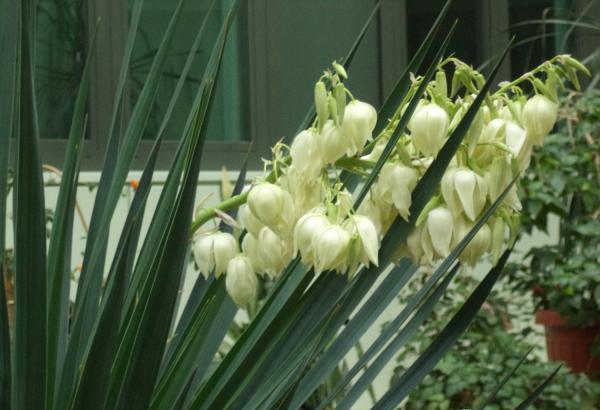

Medicinal properties
Yucca is used as a medicinal plant in folk and official medicine. It is unusual for us to make decoctions or lotions from its leaves, nevertheless, the healing effect of the culture has been scientifically proven. Of the contraindications, one can only name individual intolerance and urolithiasis or gallstone disease, in which one should consult a doctor before taking medications.
The healing properties of yucca:
- the leaves are used for the manufacture of hormonal preparations due to the presence of steroid saponins and aglycones in them;
- saponin is also used for arthritis tablets;
- extracts from leaves are used in the treatment of atherosclerosis, inflammatory processes, normalization of metabolic processes;
- Yucca preparations treat allergies;
- the flower extract contains selenium, zinc, carbohydrates;
- the roots are rich in saponins, folic and pantothenic acid, vitamins E, K, riboflavin, niacin, thiamine, microelements.
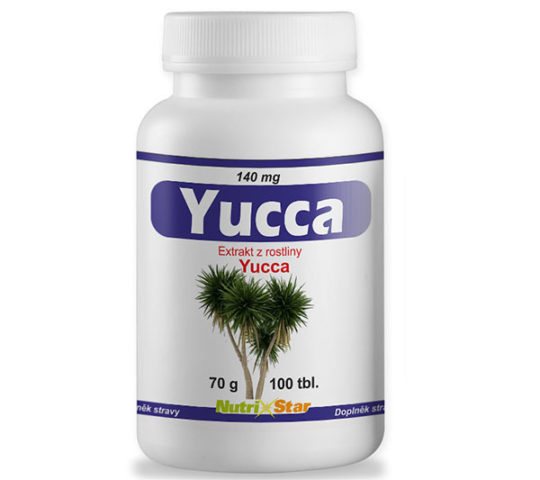

The chemical composition of the plant allows it to be used to treat a wider range of diseases than is used by official medicine:
- saponin steroids have antifungal and anti-edema properties, lower cholesterol;
- antioxidants neutralize the action of free radicals and other harmful substances;
- mucus, due to its enveloping properties, is used in the treatment of gastrointestinal diseases;
- anthraquinones are astringent and laxative.
Cooking applications
Yucca flowers taste like artichokes, they are part of exotic salads and side dishes. They are put into omelets and soups.
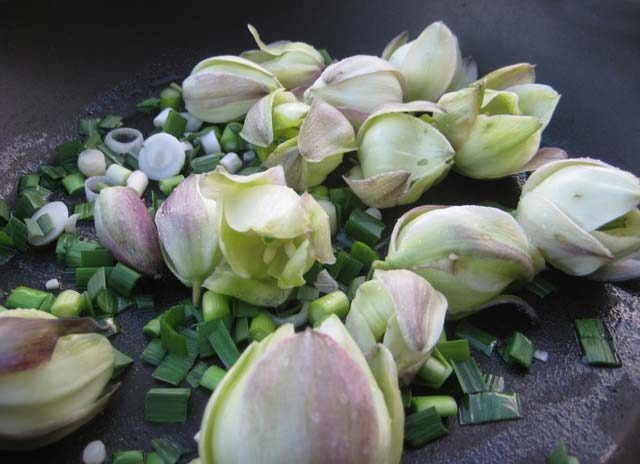

You can often find the statement that in Latin America, yucca root is widely used, which is boiled for a long time, and is sold almost on every corner. This is not true. People who are far from exotic cuisine are confused by the consonance of the names yucca and yuca. The latter is nothing more than edible cassava, belonging to the Euphorbia family, as the inhabitants of Central America call it.
Economic value
In the United States, yucca is grown as a technical plant, making strong fibers from it for the production of wear-resistant jeans, ropes, burlap, fishing tackle, and paper. A natural red dye is isolated from the root.


Yucca in landscape design
We use garden yucca in landscape design without much imagination. Of course, this plant already looks exotic in flower beds, rockeries, slides, in landscape groups and as a tapeworm. Meanwhile, in America, with the participation of those species that can grow in our country, they create simply fantastic compositions.
Yucca can grow where there is no watering or the soil is so poor that other crops cannot withstand or lose their decorative effect. It is important that the soil is not clayey or overcast, and that the plant has enough sun, otherwise it will rarely bloom.
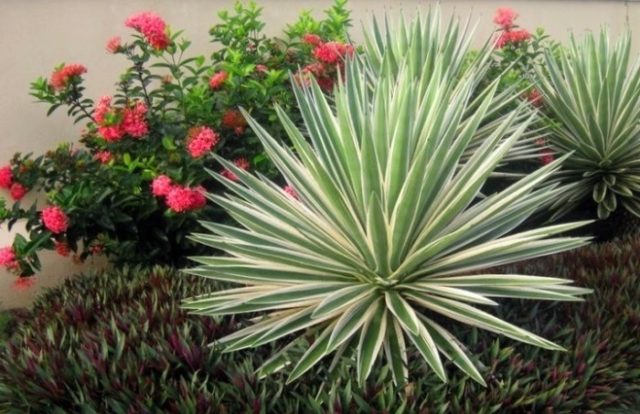

Yucca moisture and watering requirements
It is better not to water the yucca than to pour it over. Yucca cannot stand dampness, stagnant water in the soil, so you should try to water it correctly. But, in general, the plant's drought resistance can surprise even at the flowering stage. Watering the yucca is carried out carefully, without soaking the leaves of the plant, but still, even in the midst of the summer heat, it is better to do without it.
Yuccas that are grown in pots or tubs are watered as the soil dries, allowing it to dry completely or almost completely between waterings.
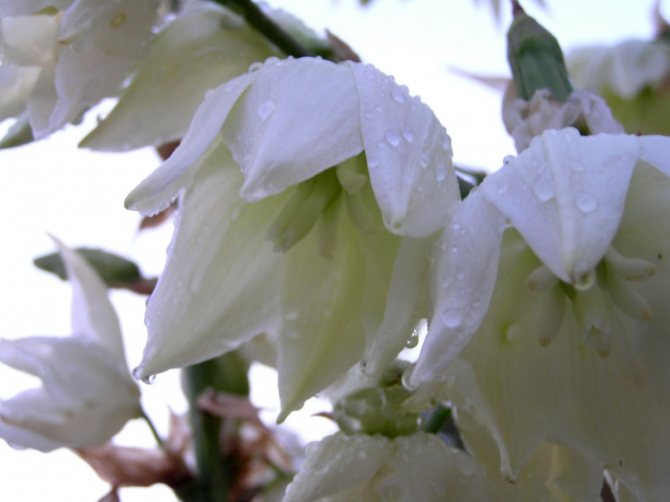

Yucca flowers.
Testimonials
Garden yucca is increasingly found in household plots throughout Russia. Florists note the plant's unpretentiousness, as well as resistance to unfavorable climates and soil quality.
Starting from the second year of life, yucca blooms profusely and for a long time, complementing the exterior of the site. It can be planted separately or as part of mixborders. The flower looks especially beautiful next to conifers.
The main disadvantage of this plant is its demand for moisture.Some growers note a deterioration in the condition of the leaves and a complete absence of flowering when planting in lowlands, areas with low-lying groundwater.
Pests
In addition to diseases, garden yucca can be damaged by insects. If the bushes have good immunity, then they are not afraid of pests. Damaged plants become targets for insects.
Dangerous pests:
- Mealybug... Most often appears during a period when the plant is under stress from temperature changes. Outwardly, it looks like cotton balls. The worm is harmful to bushes, it feeds on the sap of leaves and branches, and multiplies very quickly. Getting rid of the worm is quite difficult. It is necessary to wipe the leaves with a sponge soaked in soapy water. In the end, you need to treat the bushes with an insecticide.
- Shield... Another dangerous pest that can destroy flowers. He looks like a little turtle. Attaches to the leaves and sucks out all the juices. If sticky discharge appeared on the bushes, then the scabbard made itself felt. Getting rid of insects is difficult. To begin with, you should remove adults with a sponge dipped in vodka. And then treat the bushes with an insecticide. You can repeat the procedure three times.
- Spider mite... On plants with weakened immunity, it will be possible to notice a spider mite. First, light spots appear on the back of the leaves, then a cobweb forms. Insecticides such as Fitoverm and Vertimek will help protect flowers.
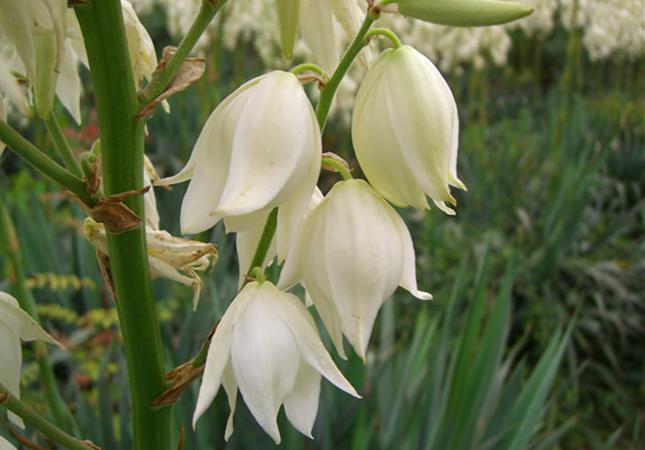

Proper care is what is needed for the normal development of the bushes. If all activities are carried out in a timely manner, then the yucca will not hurt, and will soon delight the summer resident with stunning flowering. The flower bed will be transformed before our eyes, it will become a cozy corner on the site.
Types of yucca with names and photos
There are about 30 known varieties of yucca, which are divided into two main groups:
- tree-like;
- stemless.
BEAUTIFUL FLOWERS!
Nerine flower or spider lilyWeigelaHydrangea
In the wilderness of America or Mexico, the tree yucca reaches 12 m. In a garden, this plant will not exceed 2 m in height.
It will be useful to know that among Americans this plant is often called the "denim tree".
The reason for this was the fact that the first denim fabric was obtained just from the fibers of the yucca plant.
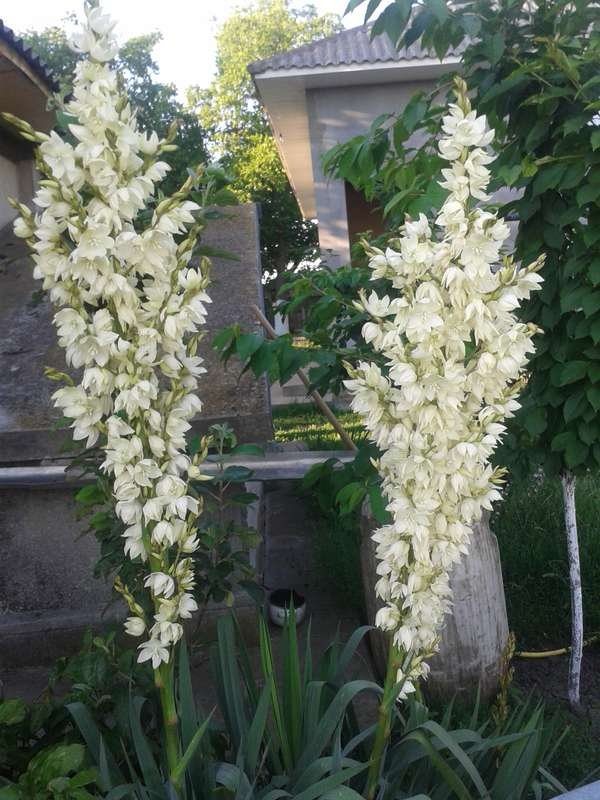

Florists widely use this plant of the following types:
- yucca gray;
- filamentous yucca;
- Yucca Trekula;
- yucca is nice.
Next, we will give a description of each of these types of yucca with a photo.
Yucca filamentous
Landscape designers generously decorate gardens and flower beds with filamentous yucca. This plant has no stem,
but this disadvantage is compensated by the voluminous, fleshy ground part. The foliage reaches 70 cm in length. It is colored bluish green. The edges of the leaves have sharp ends.
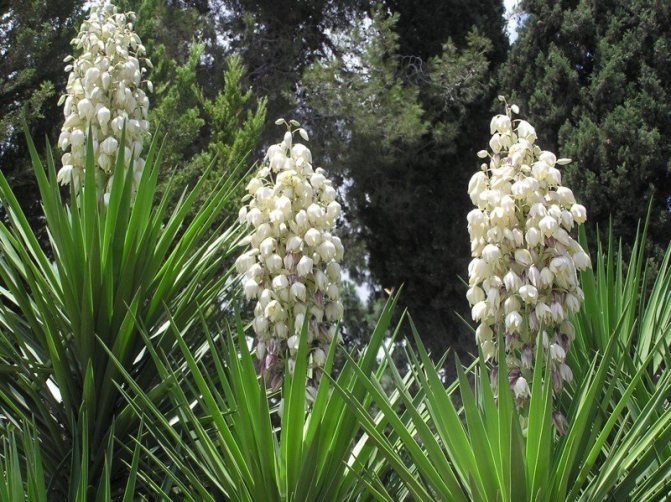

The filamentous appearance owes its name to the presence of white thin filamentous fibers curling along the edges of the foliage. If the threads are slightly curled and have an elastic appearance, then this allows you to judge the excellent condition of the plant.
Features and care for yucca filamentous - video
In the center of the plant, a powerful peduncle 100-200 cm long appears, on which bell flowers bloom in a paniculate inflorescence. The color of the flowers is limited to white-cream tones, but this fact does not touch the excellent picture of flowering filamentous yucca
.
The number of bells can be up to 300. The plant's rhizome is able to penetrate deeply into the soil. The offspring appear from the root system. Florists use these young sprouts for flower propagation.
BEAUTIFUL FLOWERS!
Rose "Mondial" pink, fantasyRose Decor HarlequinBlack Rose Black Baccara "Black Baccara"
The filamentous yucca species is considered frost-resistant, capable of withstanding a decrease in ambient temperature to -20C.
Yucca gray
The gray yucca is the same like the filamentous variety, it has no stem.
The length of the foliage does not exceed 70 cm. The color of the narrow lanceolate leaves is bluish-green. The edges of the foliage are edged in white.There are few threads. White flowers have a greenish or yellowish tint. The bells are slightly drooping.
Yucca is a gray frost-resistant plant.
Photo of yucca gray in the garden
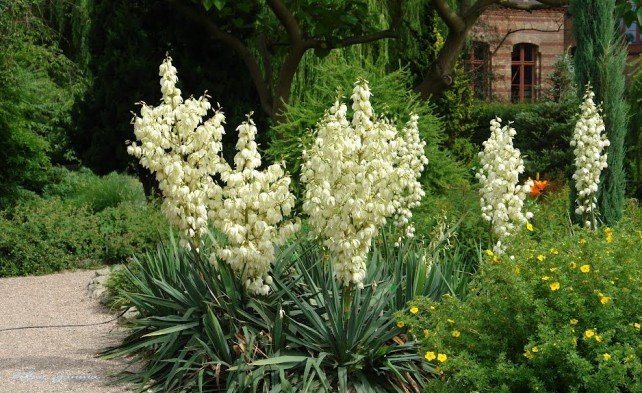

Yucca Sizoy review - video
Yucca is glorious
Yucca is glorious can be grown indoors and in the garden.
The roots of this plant go to the countries of America. One rhizome can give life to 2-3 rosettes with tree-like stems at once. Blooms with white bells, which are located on a strong peduncle.
The glorious yucca species is propagated by buds and basal processes.
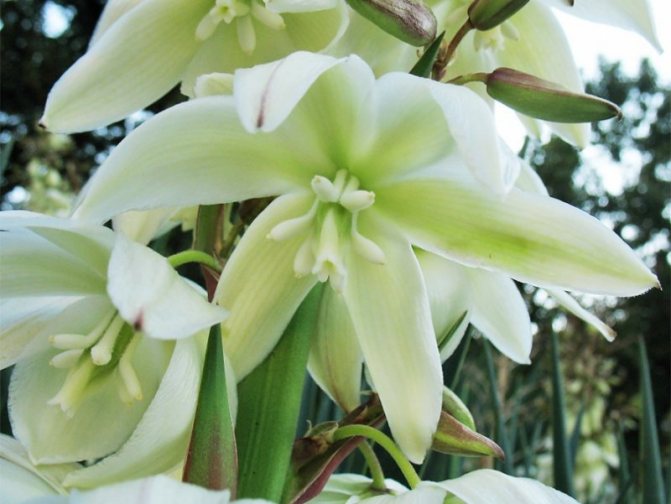

Yucca Trekula
Another type of ornamental American plant. It has a tree-like stem, the end of which is a rosette of foliage of a pleasant green-blue color. For reproduction of Trekul yucca, a vegetative method is used.
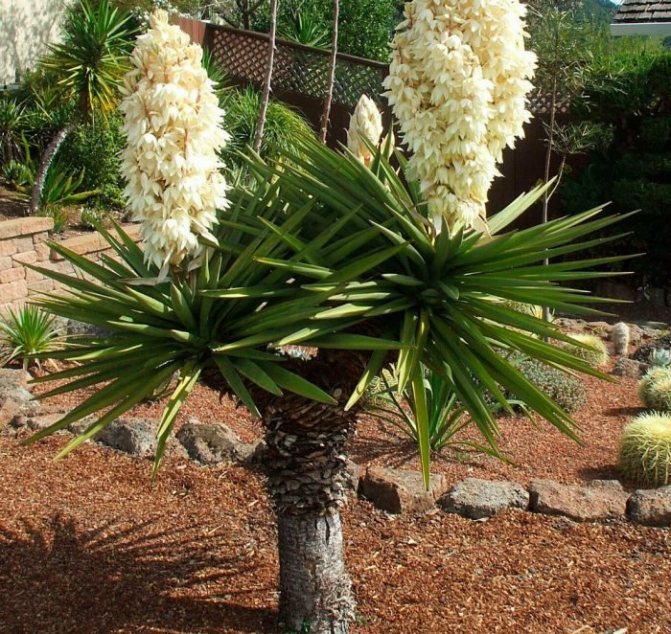

Choice of place and conditions of detention
Yucca is one of the most unpretentious garden plants. It is able to bloom and bear fruit in drought and frost. To achieve abundant flowering, vigorous growth and rich color, it is extremely important to comply with planting conditions and proper care. Below we look at the key points of growing street yucca.
Lighting and location


Yucca, like other members of the family, prefers well-lit places, but it can bloom in partial shade, especially when planted in sunny regions. Lack of light negatively affects the state of the leaves - they stretch up strongly, the structure of the leaf plate changes.
In variegated yucca species, with a lack of lighting, the leaves may begin to fade and the rosette may become loose. In addition, protection from the wind is required, since this is a tall plant that can break down with strong gusts.
There are no requirements for the soil for planting, yucca is unpretentious in the quality and composition of the soil, but when planting in acidic substrates, the quality of flowering deteriorates. Before planting, it is advisable to add organic matter to which the plant reacts well. With a lack of minerals in the soil, flowering can be delayed for several years.
Temperature
Like other exotic plants, yucca thrives best when the air temperature is stable (15-22 ° C). However, most plant varieties can tolerate extreme heat and cold. Before planting, it is advisable to wait until the end of spring, when the air temperature settles at a stable level of 10 ° C.
The quality and abundance of flowering depends more on proper care and timeliness of fertilizing. Despite the fact that yucca is a frost-resistant plant, it is recommended to cover the bush in winter, especially when grown in cold regions with high air humidity (Siberia, Ural or Karelia).
Air and humidity
Drafts and high humidity are major problems when growing yucca. The plant does not tolerate wet soil and air poorly - the growth rate deteriorates, the leaves begin to change their structure and color.
It is for this reason that it is advisable to plant the flower next to the fence, as well as add sand to the soil when planting. The amount of watering depends on the growing season, but the yucca should never be poured.
Priming
Yucca blooms can be achieved in any soil. An important condition is that the root system has access to air, so you should not plant in a dense substrate or on a clayey area. Before planting in the ground, you need to add clean river sand, and then dig it up to the depth of the shovel bayonet.
Drainage (expanded clay, sand or gravel) should be added to the planting hole to avoid moisture stagnation. It is not recommended to plant a flower in a lowland and next to a reservoir, where there is an increased soil moisture and density of the earth.
Seeds
Garden yuccas that grow outdoors often produce seeds that can be used to propagate an exotic plant. You can also purchase seed at any specialty store.The seeds are round in shape and reach a diameter of 0.5-1 centimeters. Sowing should be done in an earthen mixture, consisting of equal parts:
- coarse sand;
- turf land;
- leafy land.
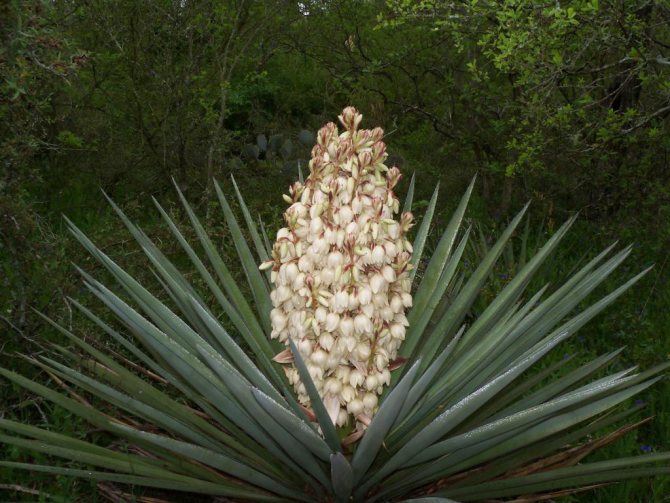

The first seedlings will appear in about a month. As soon as two real leaves open, it is necessary to make a pick in separate cups. In open ground or in large pots, plants are planted only in a strengthened form. The disadvantage of this method of reproduction of yucca is that the culture grown from seeds will bloom only in the third year after planting. This may seem like a huge disadvantage for those flower growers who appreciate their decorative qualities and aroma in plants during flowering.
Using yucca to decorate the garden
The decorativeness of yucca allows you to use it to decorate arid areas in the garden. The plant is used to create rock gardens, the formation of original paths. The fashion trend is planting crops in monochrome white gardens.
Such "palms" look great in group compositions or single plantings. They go well with low-growing crops that have pastel-colored flowers.
Interesting fact! The fibers obtained from the plant are added to denim, a fabric used to sew denim. This increases the wear resistance of the products.
How yucca winters
In the southern regions, the well-rooted Yucca Filamenta winters without any shelter. In the Middle Lane, it requires light insulation only for the first 3 years. As we move to the North and beyond the Urals, the shelter for the plant becomes more and more serious.
Yucca Sizaya does not withstand long-term frosts below -20⁰ С. Moreover, the growth point suffers first of all. This must be taken into account when constructing a shelter and based on their own climatic conditions. For example, in the conditions of the Moscow region, without shelter, some of the leaves will freeze in the yucca, and it will take all of May and part of June to restore them. Therefore, the plant will not bloom.
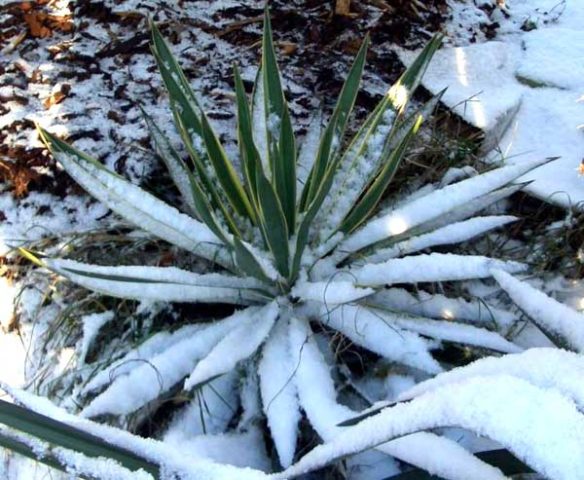

Yucca Slavnaya species winters without problems in the southernmost regions. In the rest, it must be carefully covered or dug up and transferred to the room. This is easy to do with a young plant, but as it grows up, the yucca grows a stem, it becomes problematic to warm and move it.
Important! In the Middle Lane, yucca suffers more not from frost, but from damping, soaking, which can lead to rot, and cold winds.
Preparing yucca for winter
If filamentous yucca was planted in the "right" place - sheltered from the wind, on permeable, non-locking soil or on a hill, the southerners do not need to prepare it for winter. Other species should be taken care of as described below.
In cool regions, it makes sense at the end of the growing season - in the first half of September or the last decade of August, to feed the plant with phosphorus-potassium fertilizers. They facilitate wintering and increase frost resistance. On the sheet, you should treat the yucca with epin, which activates its own protective properties.
It is better not to remove dead and damaged leaves in autumn - they will serve as additional protection of the plant from frost. If the peduncle was not cut off in time, it must be removed.
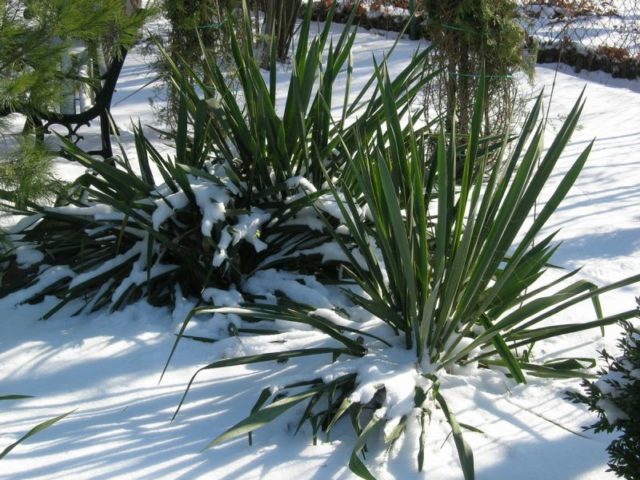

How to cover a yucca for the winter
The more frosts are typical for the region, the more severe the winter shelter of the yucca should be. The place where the garden plant is planted also matters. The windy area does not suit the yucca at all, but if it was placed there, at least a light shelter will have to be made even in the south.
Easy cover
Without waiting for the first frost, yucca leaves are collected in a bunch and wrapped with a strong rope from top to bottom. You cannot use wire or synthetic material. The lower leaves of the plant are left to lie on the ground and sprinkled with dry leaves of fruit trees, and then pressed with wooden slats.
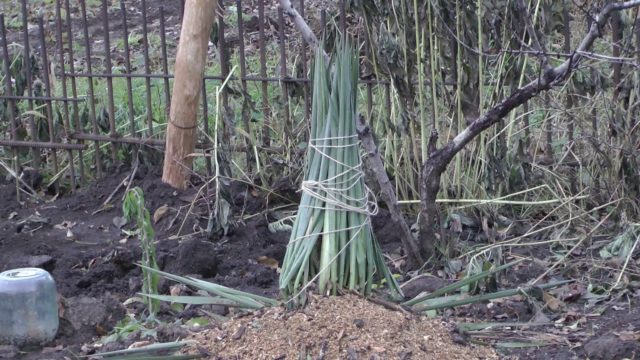

You can fill the soil with a layer of earth 15-20 cm, but this will require a lot of effort both in the fall and in the spring when opening the yucca. When covering the bottom of the plant with soil, all the leaves should be raised up.
Important! Shelter should be carried out in dry weather, if the leaves are wet, there will be no benefit from it. Rot may appear, which will destroy the plant faster than frost.
Capital shelter
Young yucca under the age of three years and thermophilic species may not be enough of an easy shelter even in the south and in the Middle Belt. Those who decide to plant a crop in a windy area also need to carefully prepare the plant for winter. In the North and beyond the Urals, the shelter should be all the more capital.
Comment! The better protected the yucca, the faster it will start to grow.
First, a light shelter is prepared for the plant, then it is protected with a wooden box without a bottom. The yucca should fit freely in it, neither tilt nor twist the leaves raised upward. If necessary, the shelter is reinforced with an insulating material, for example, lutrastil or spandbond. A layer of fallen leaves is poured around and covered with a film, which is fixed with tape.


In the spring (mid-March), the yucca is opened by first removing the box and wrapping the bush with sacking or lutrastil. Around the middle of April, the shelter is completely removed, and after a week the leaves are untied and the plant is cleaned.
Comment! The box must be wooden, metal structures are unacceptable, and cardboard ones will not survive the winter.

